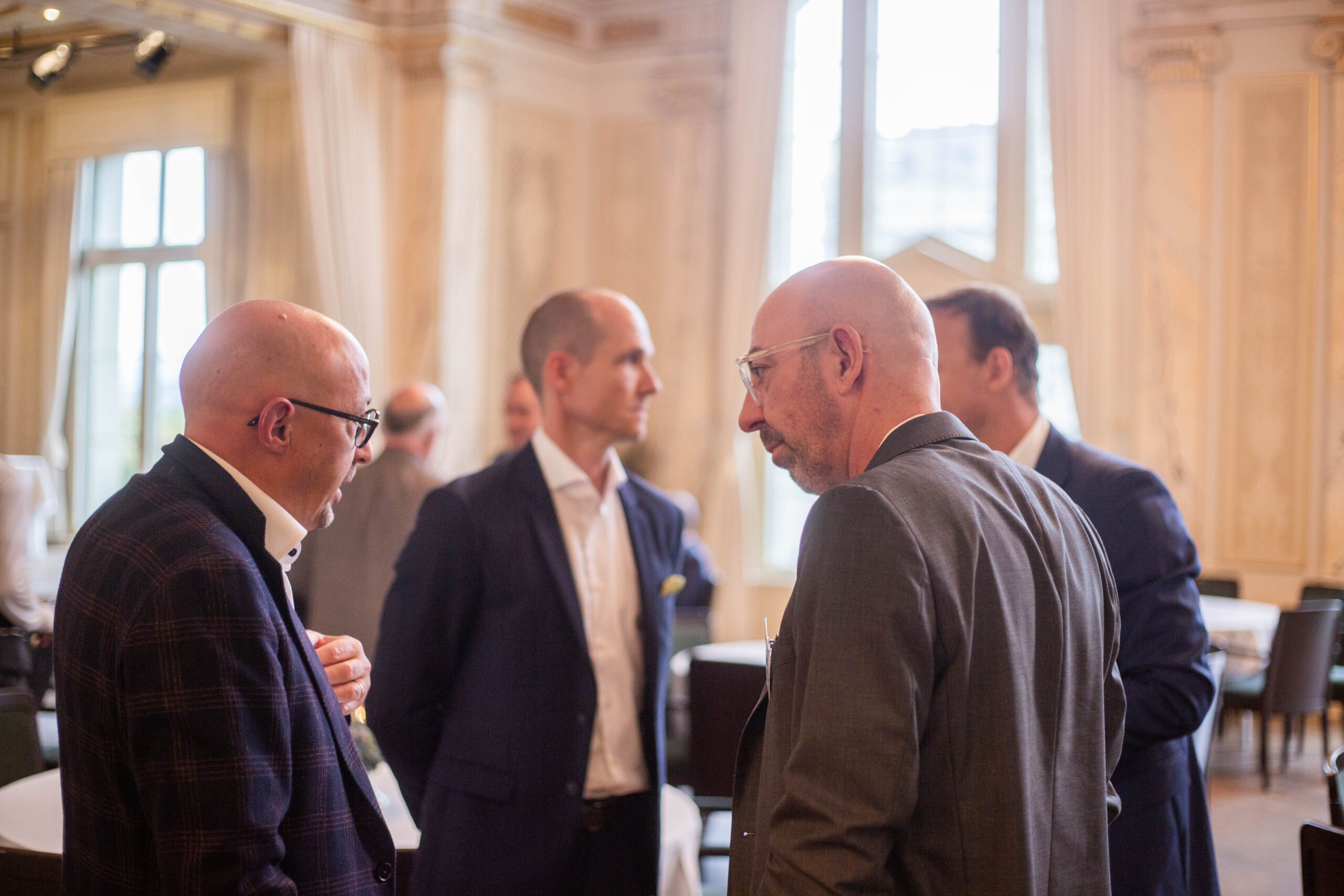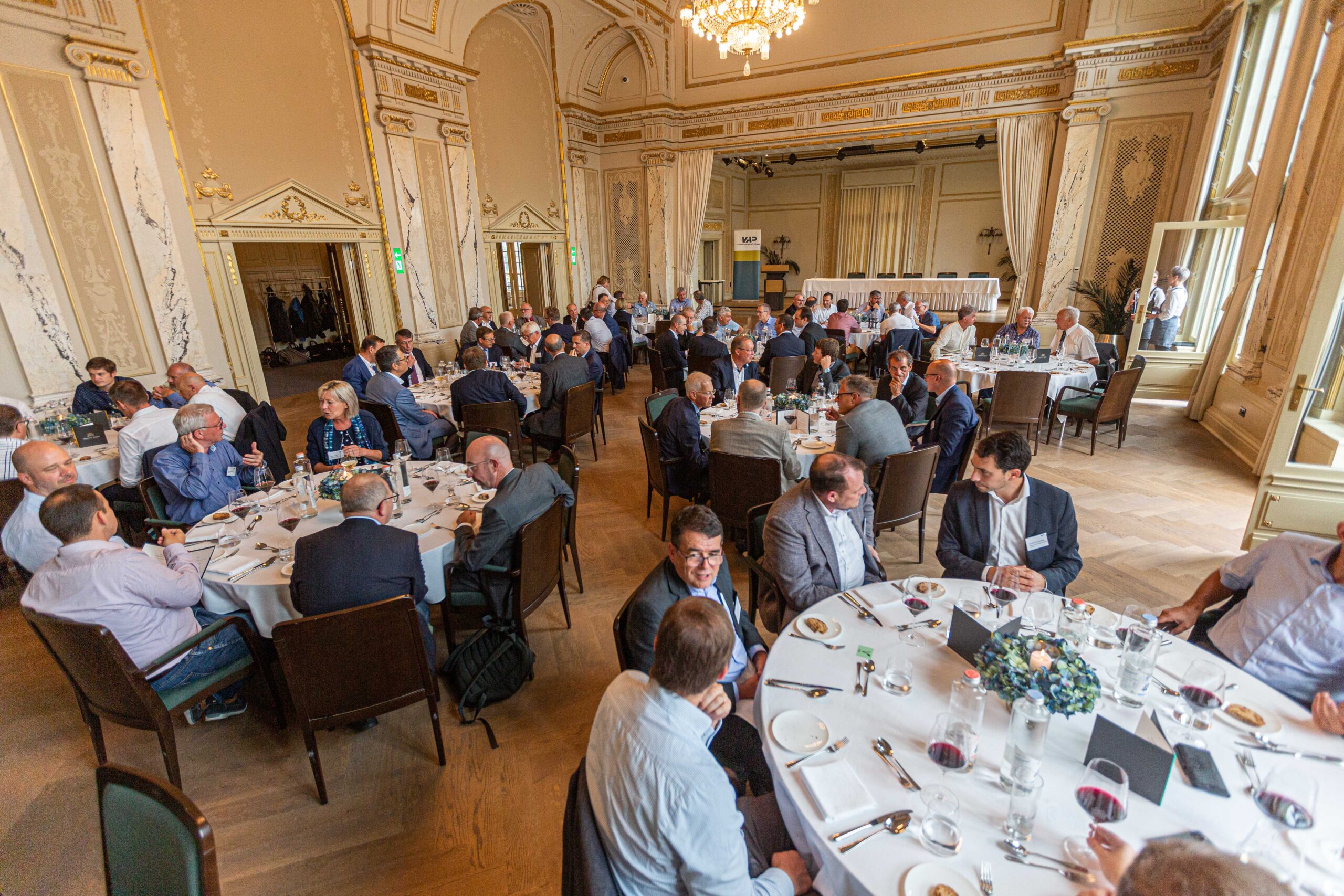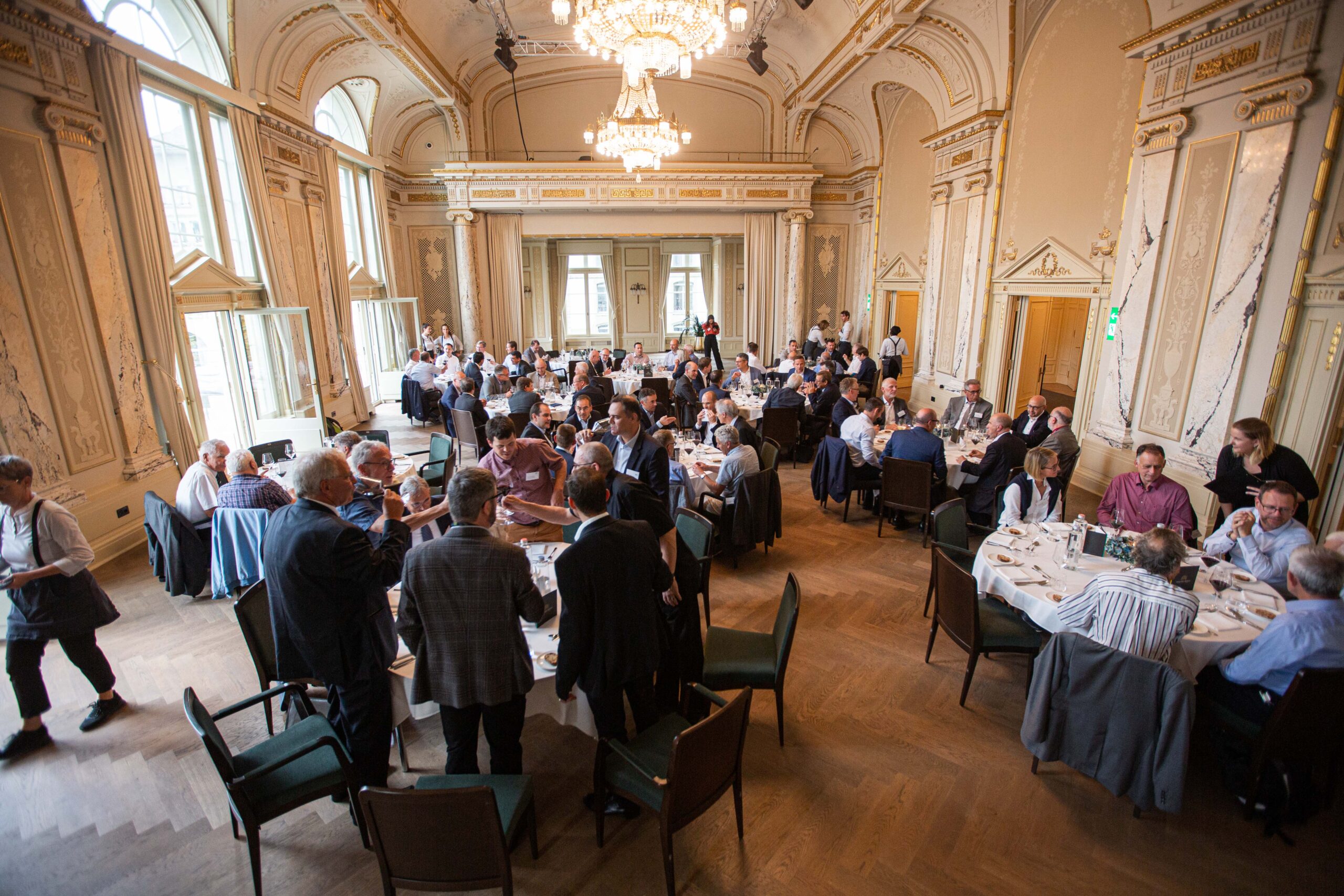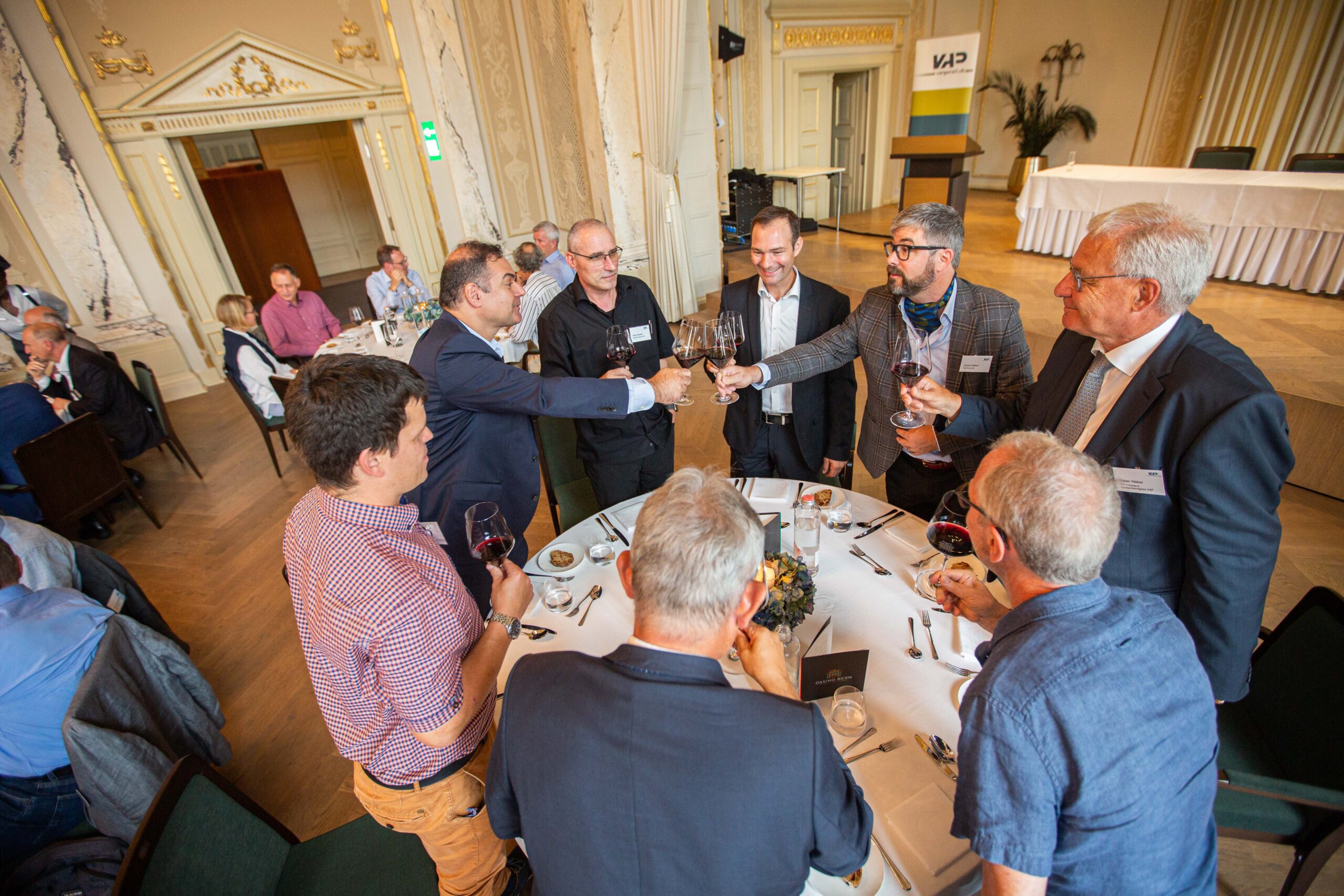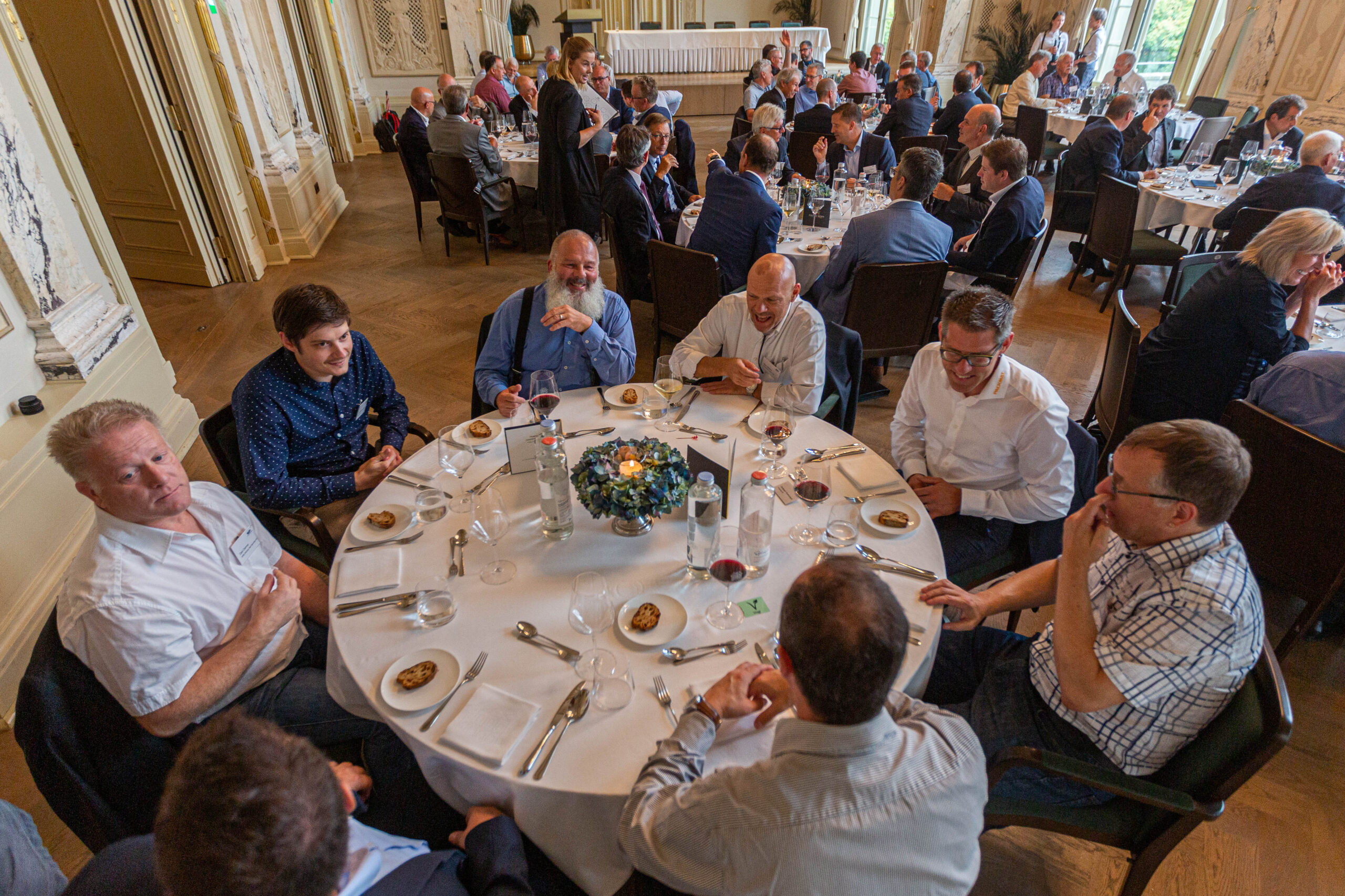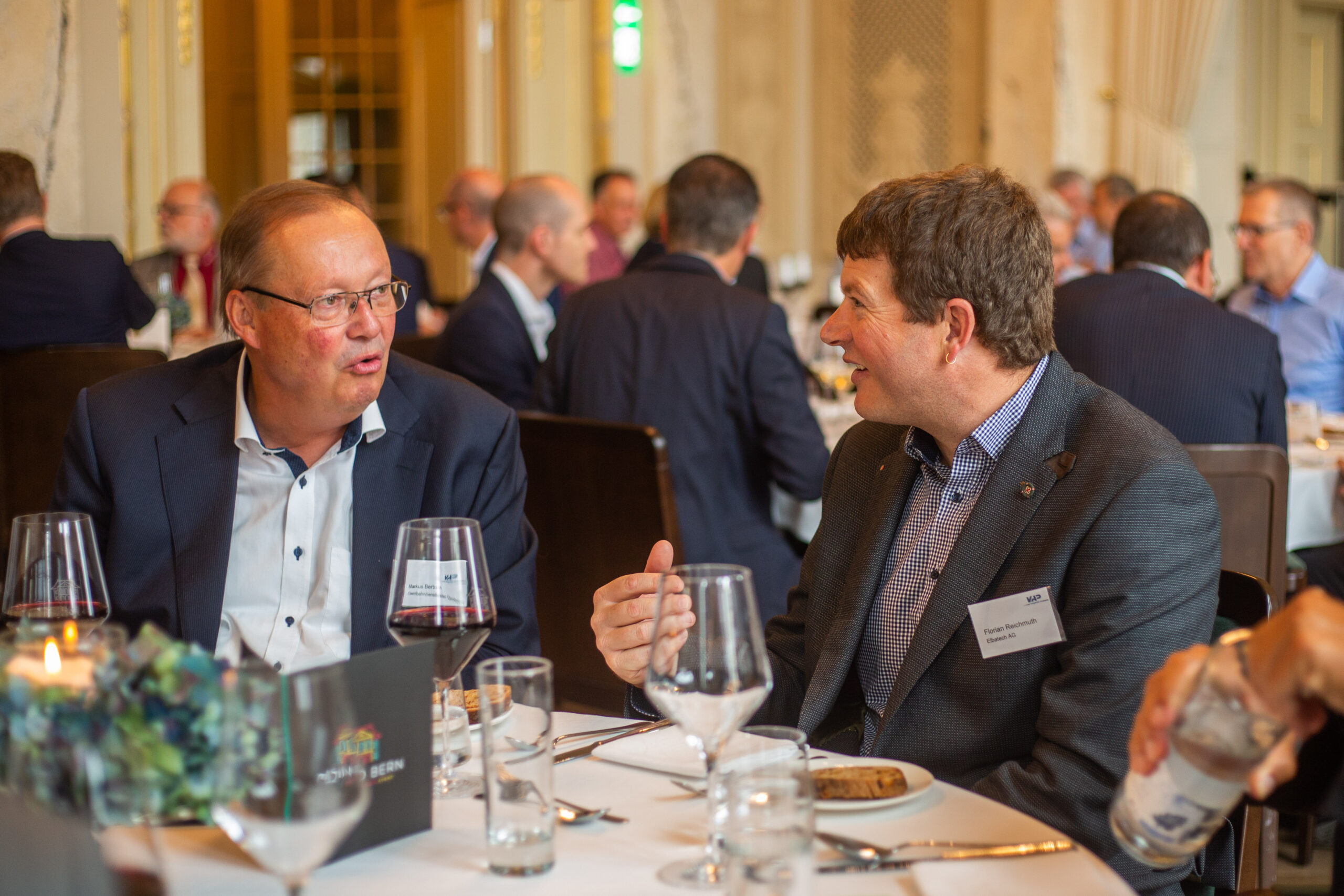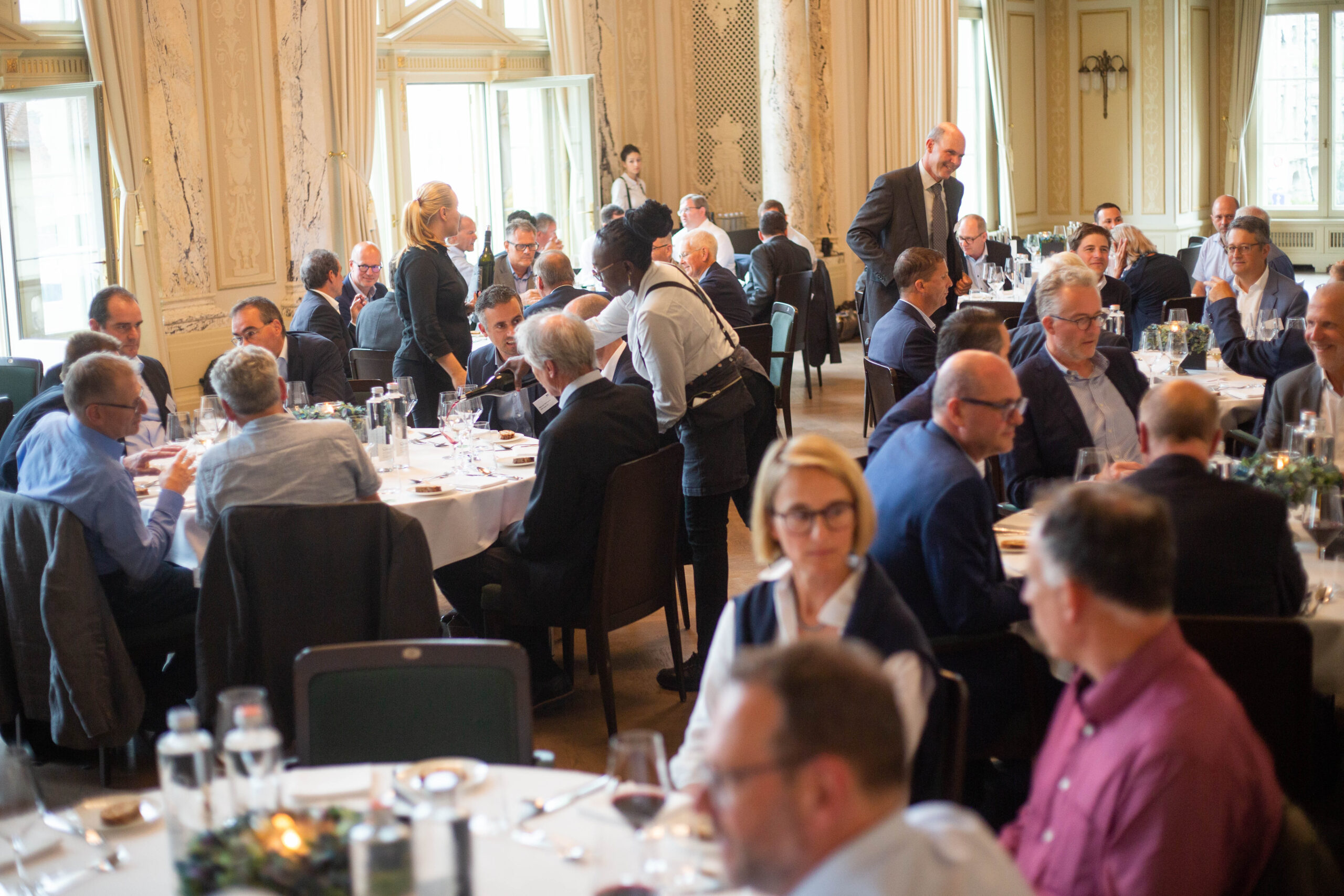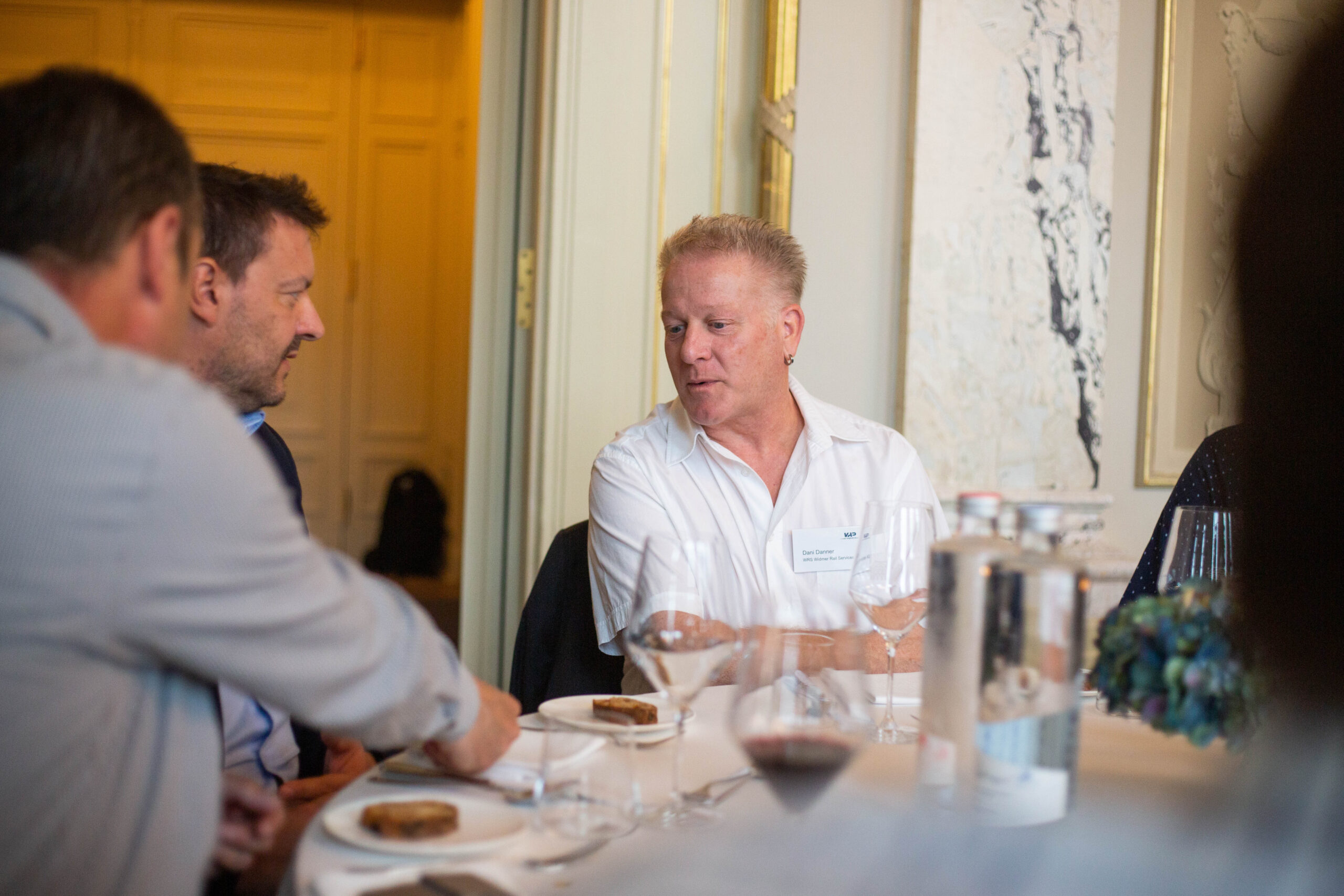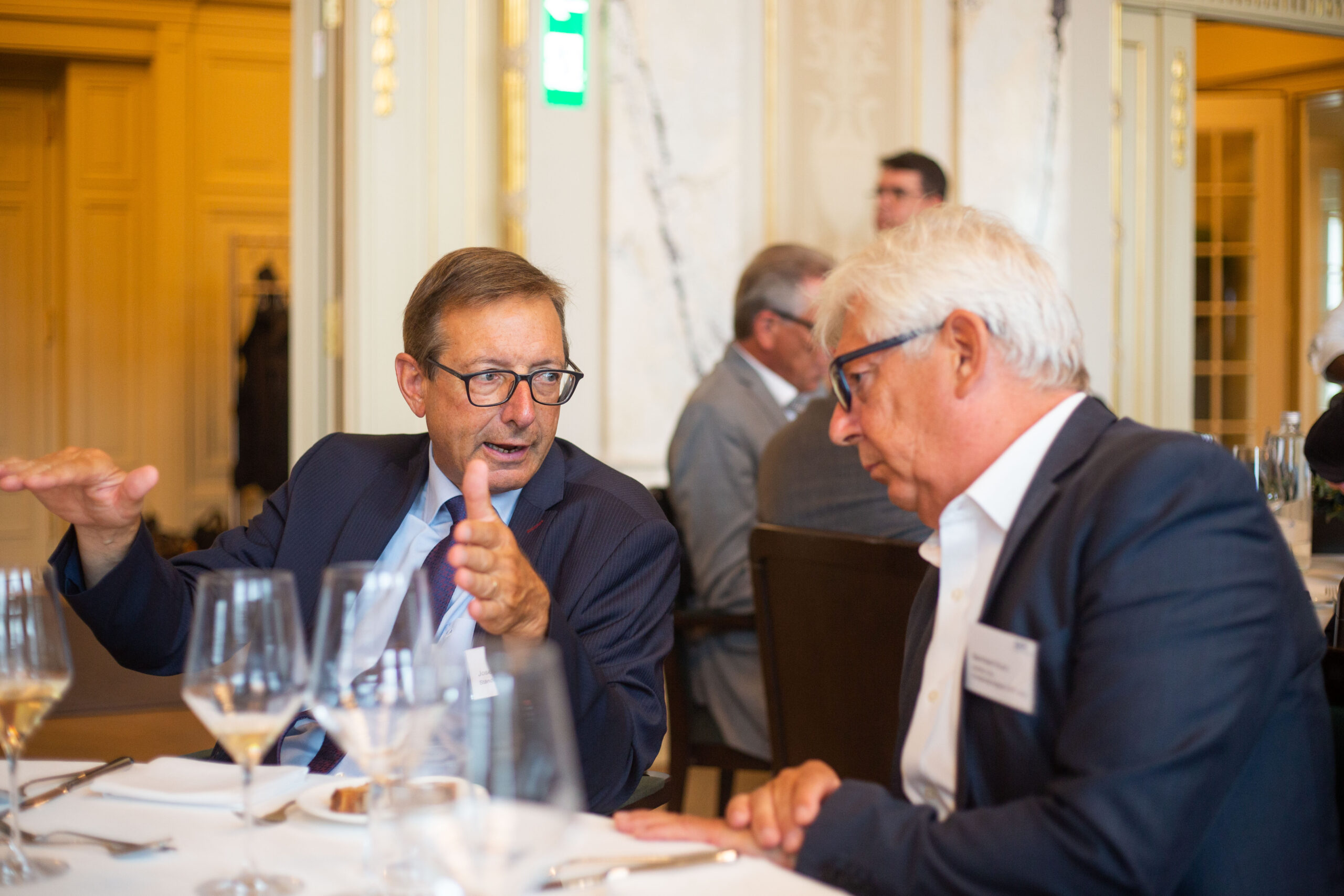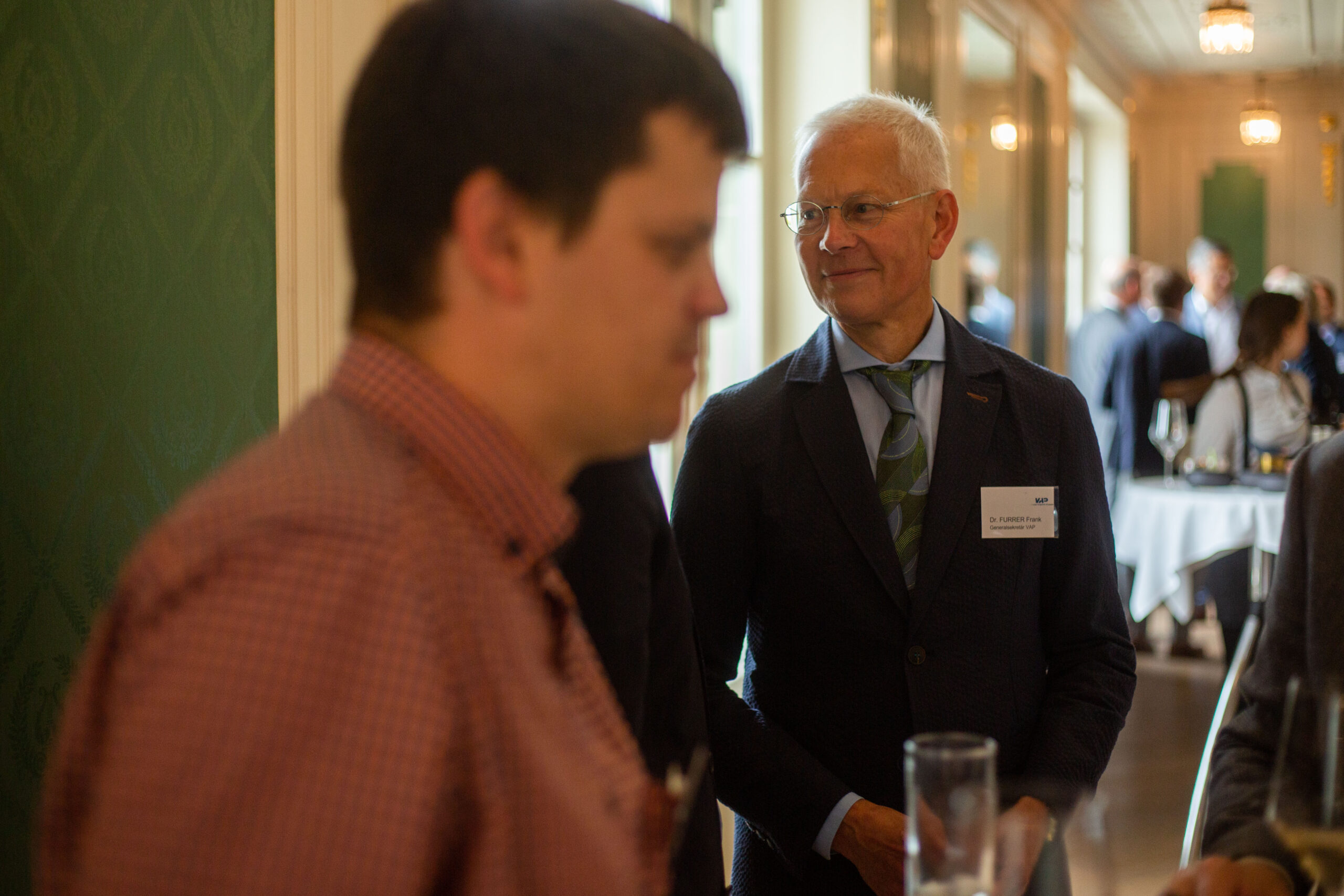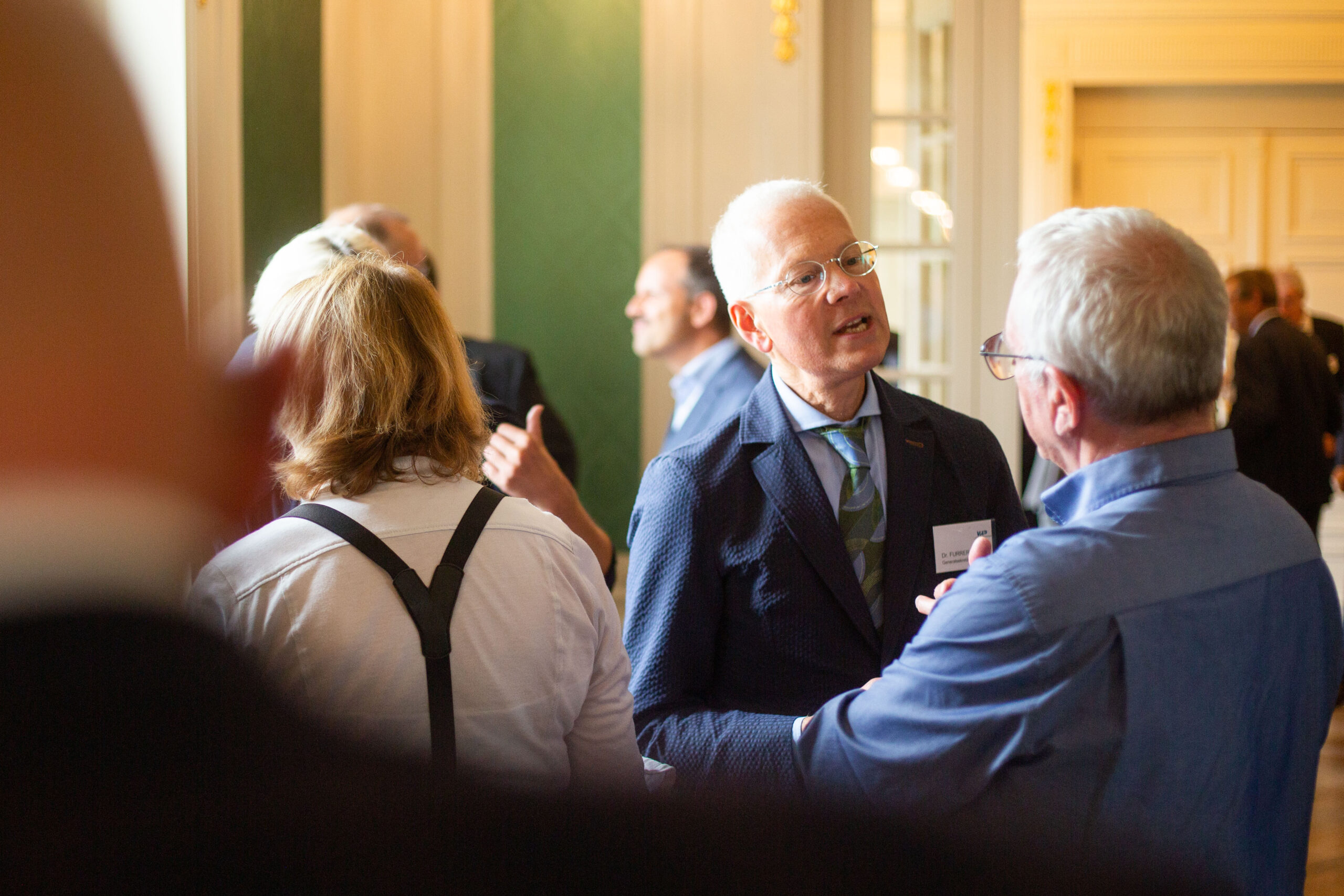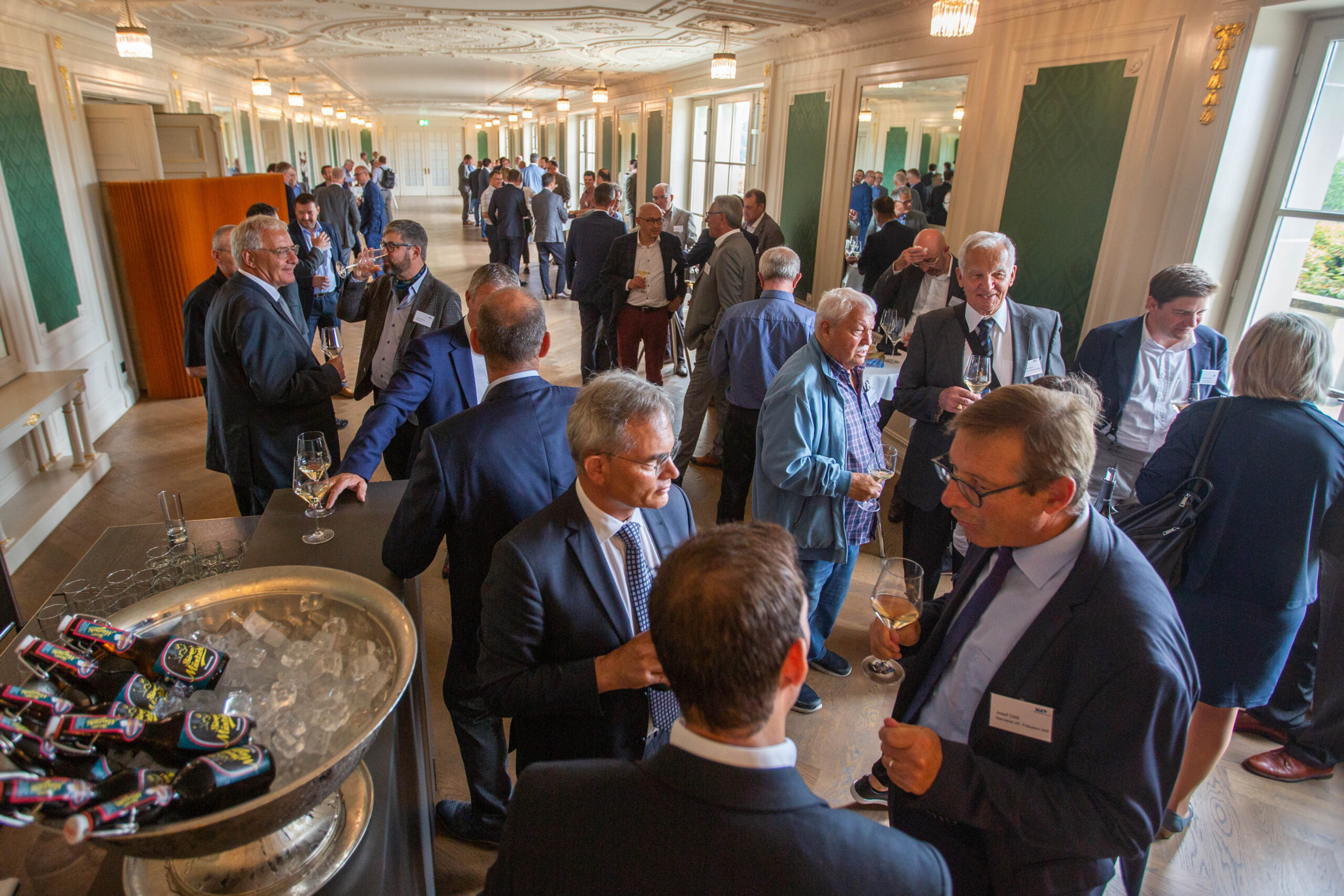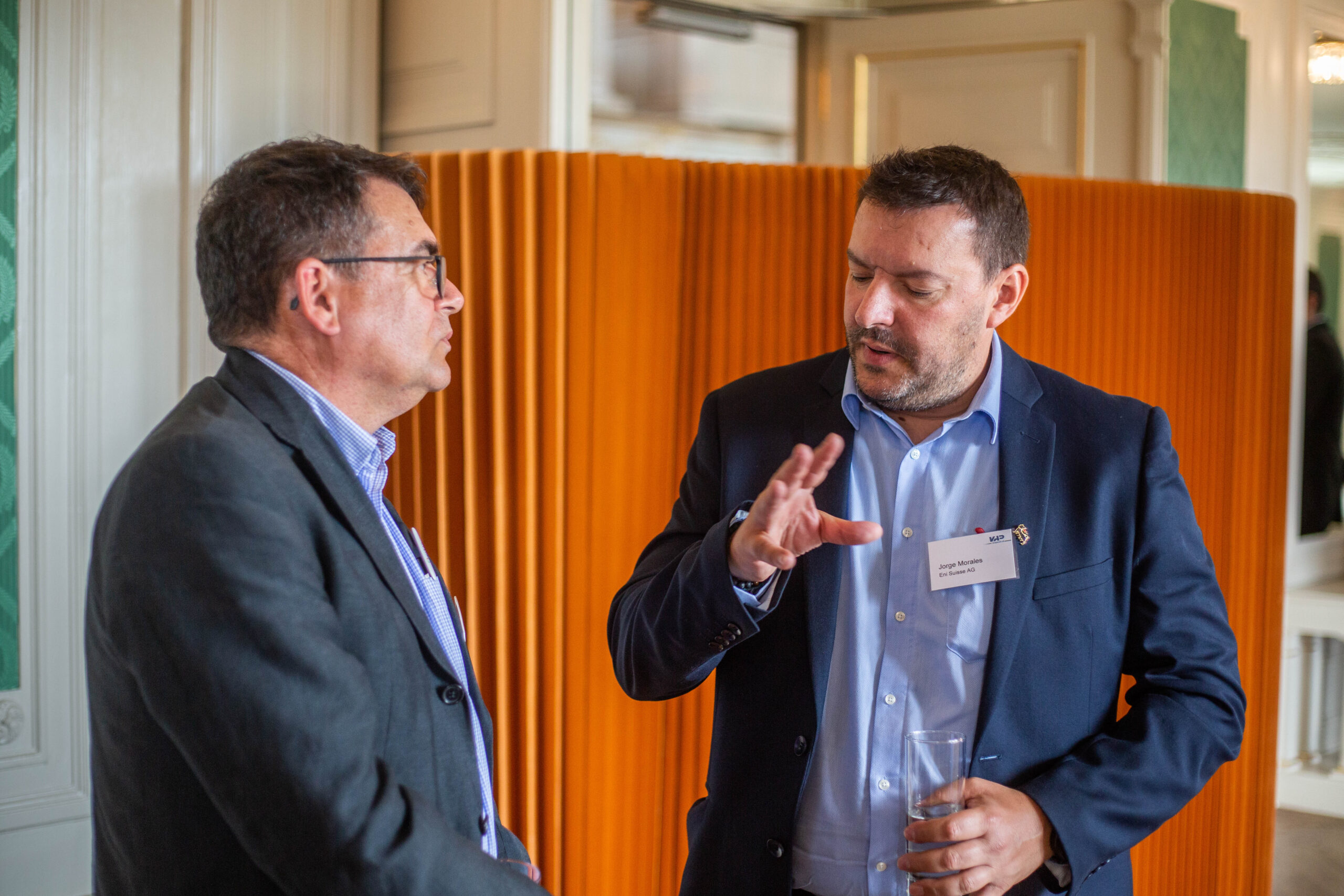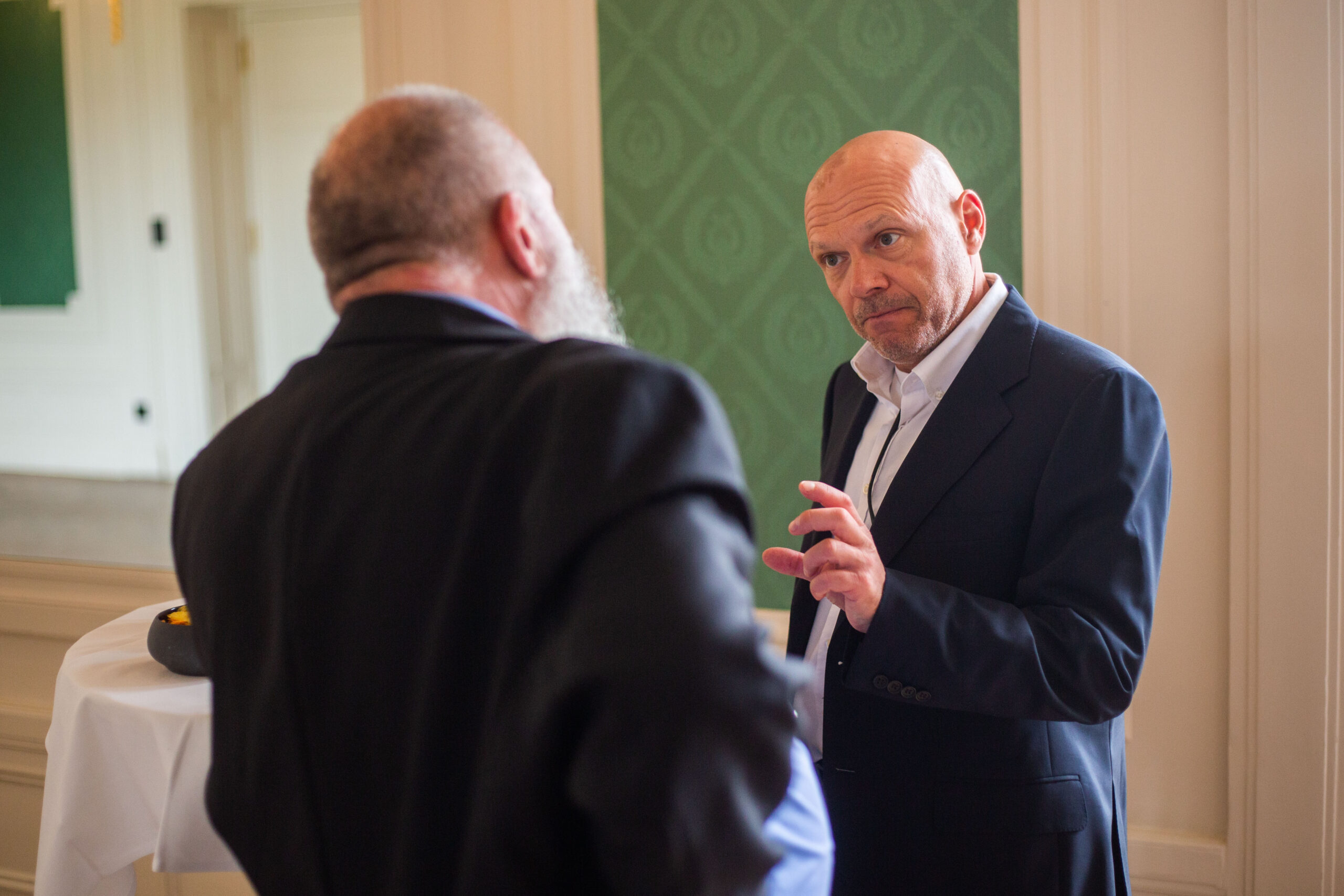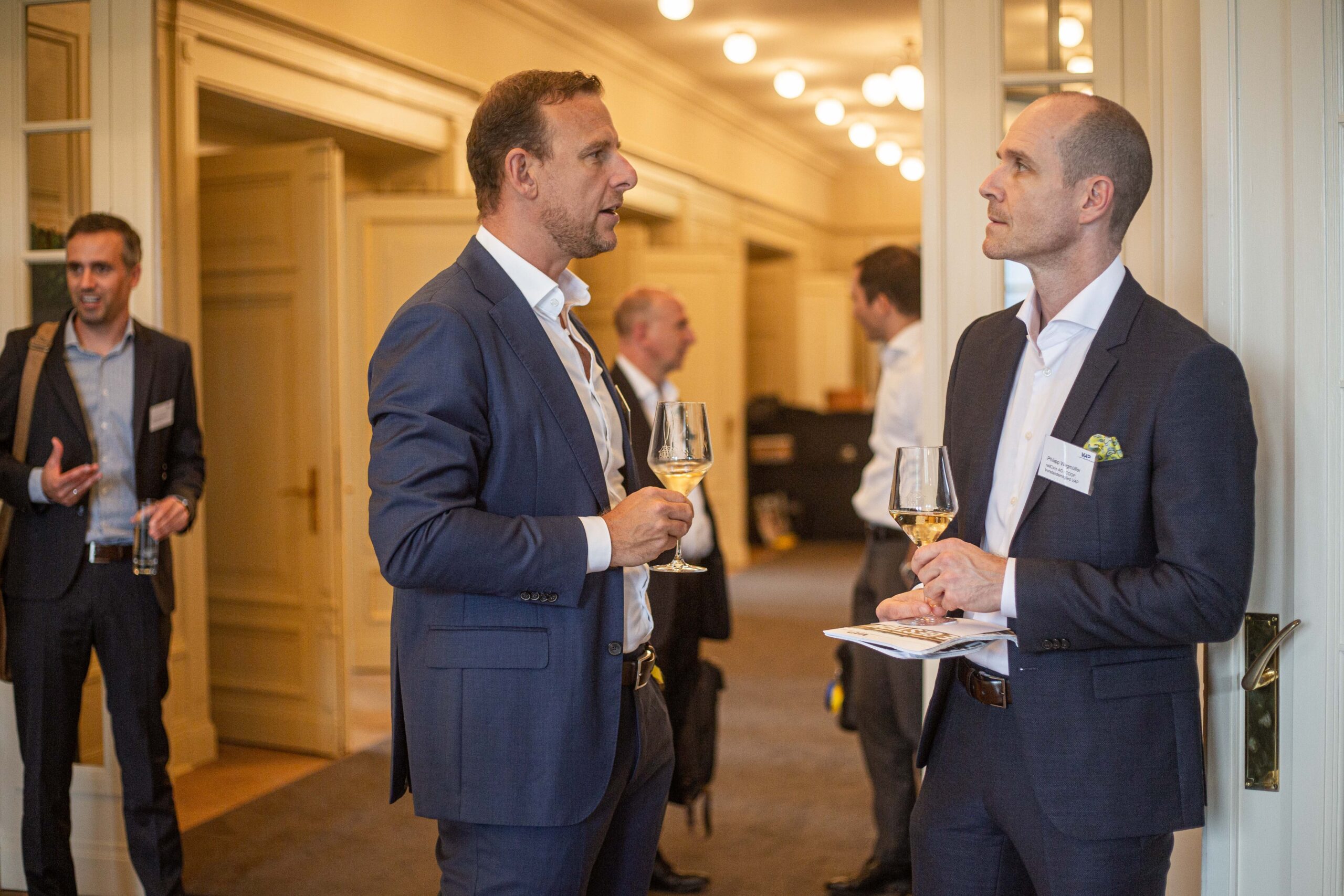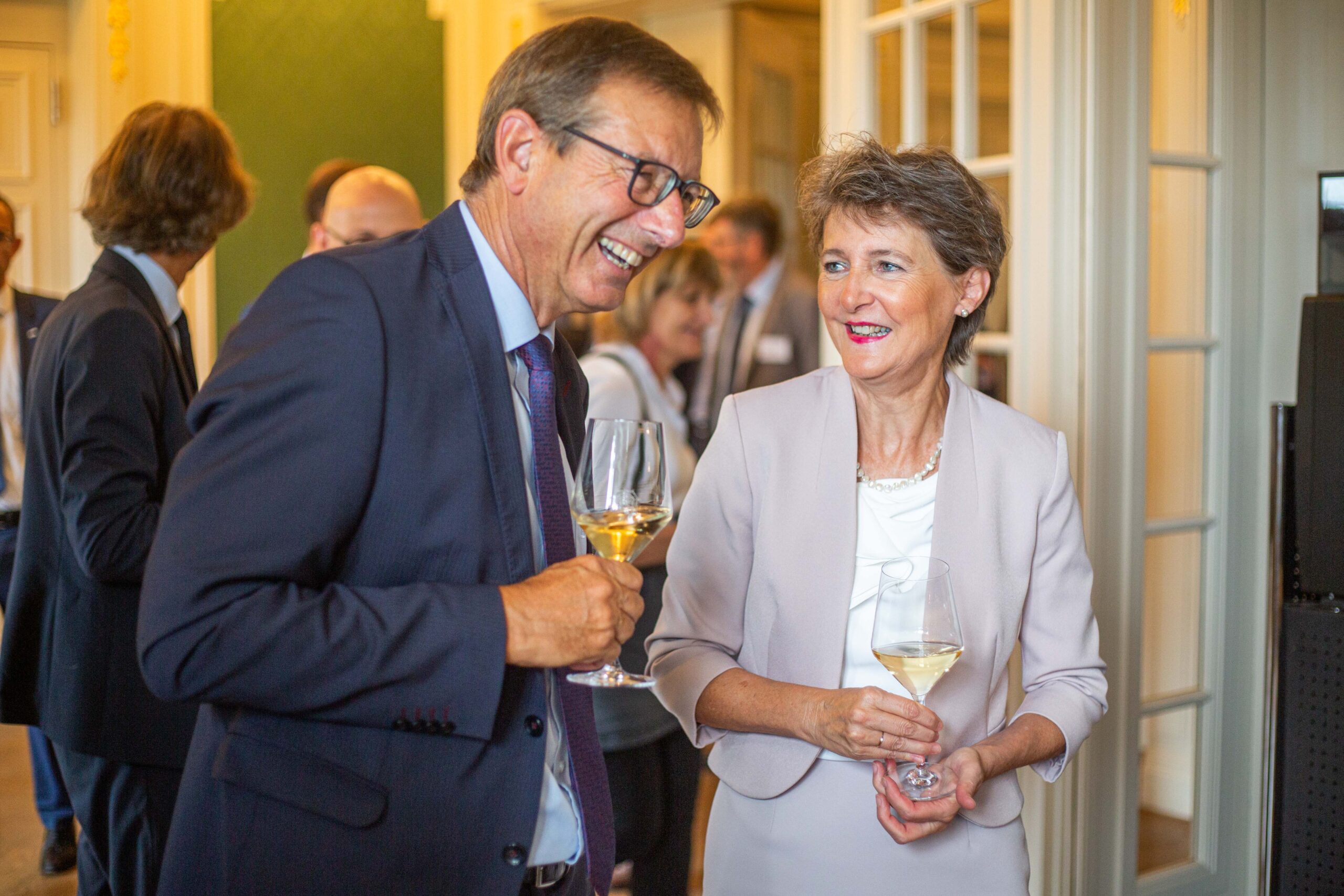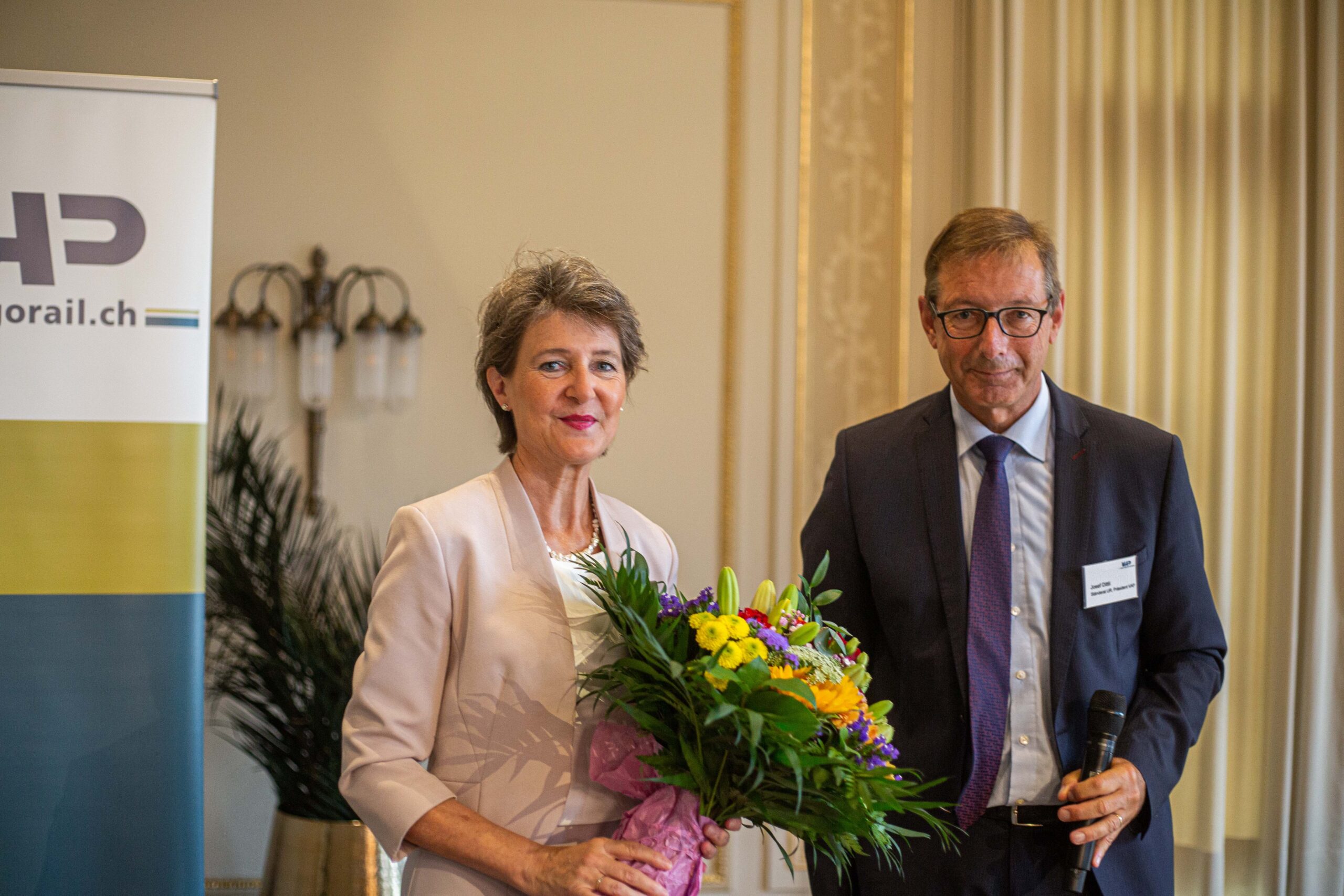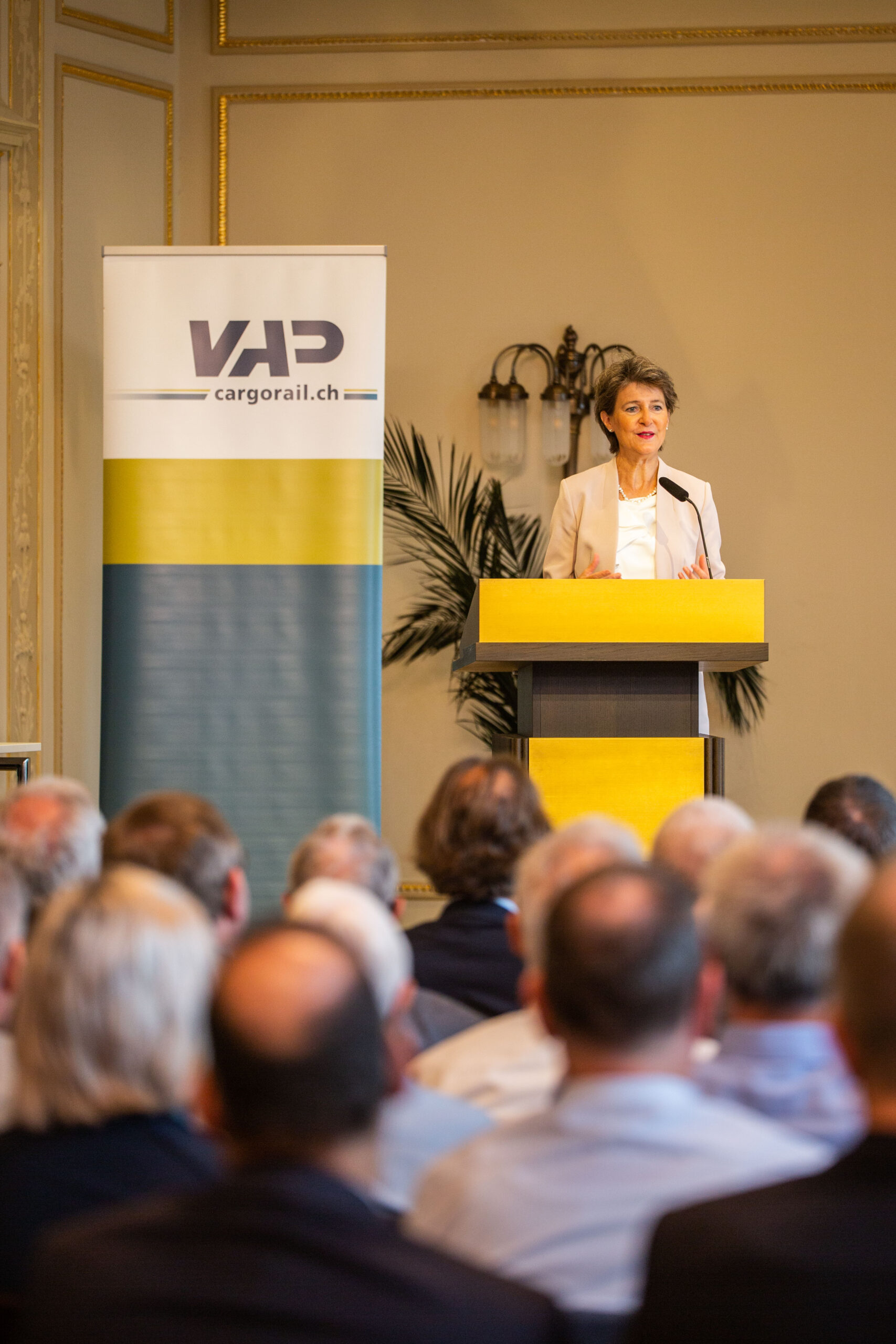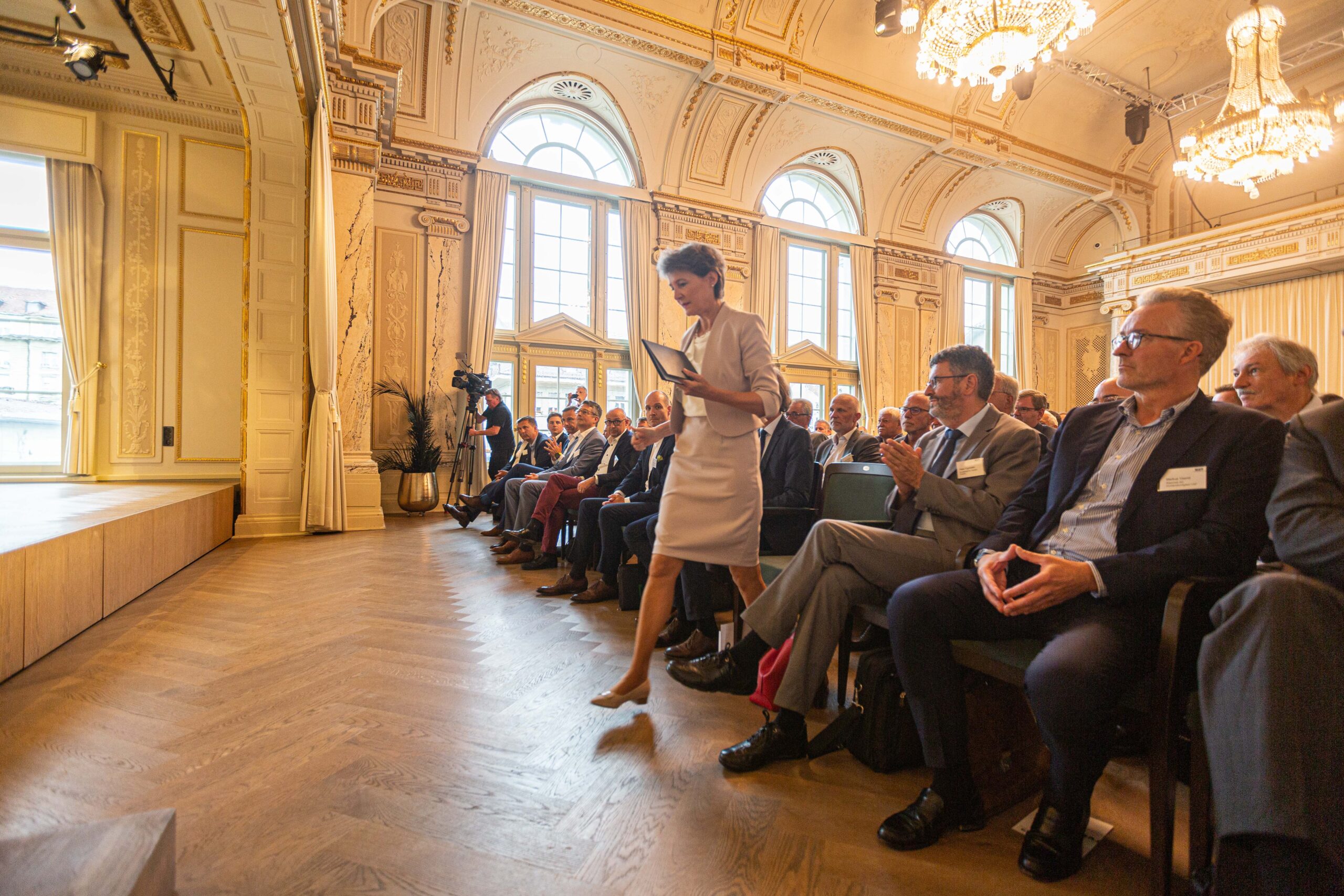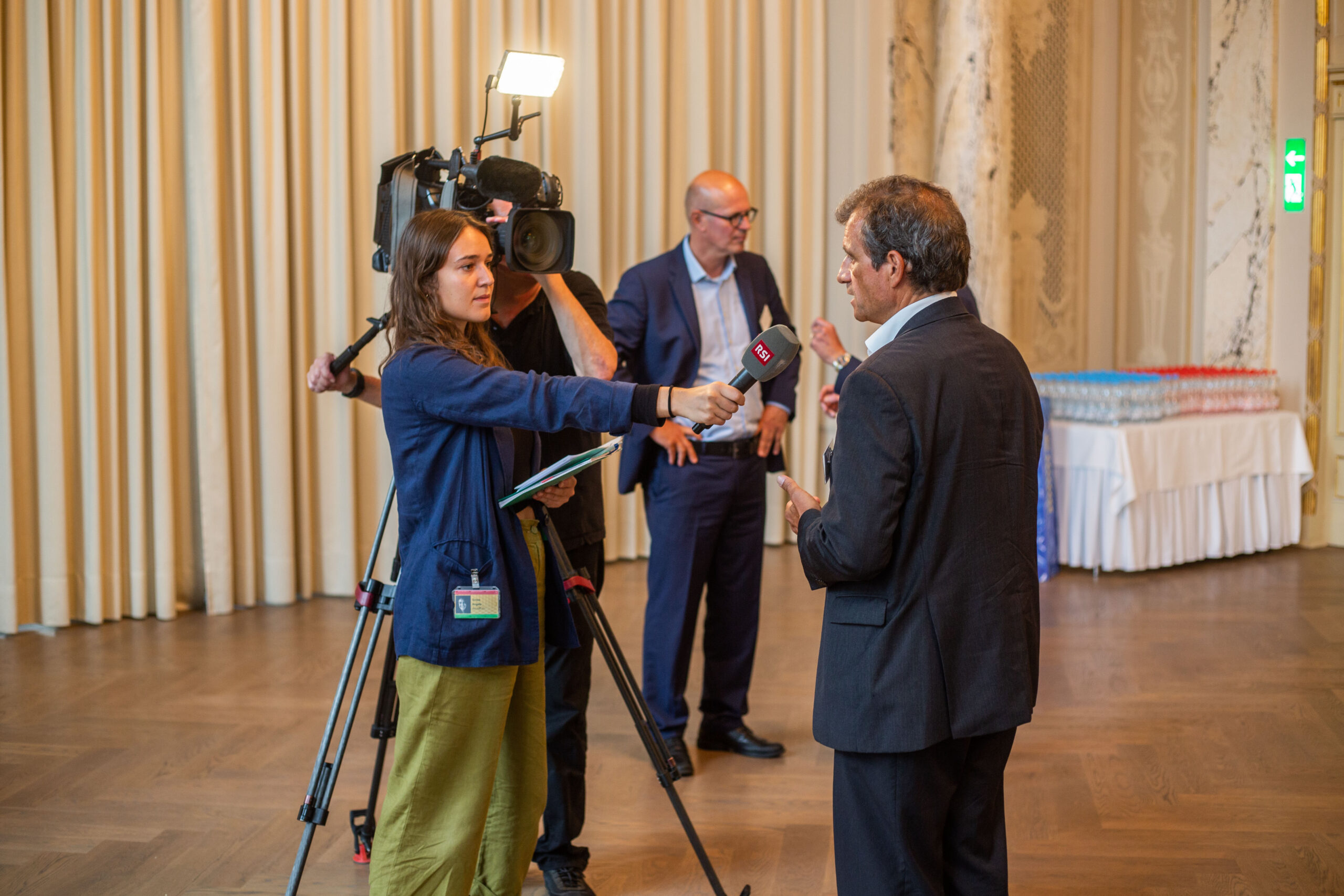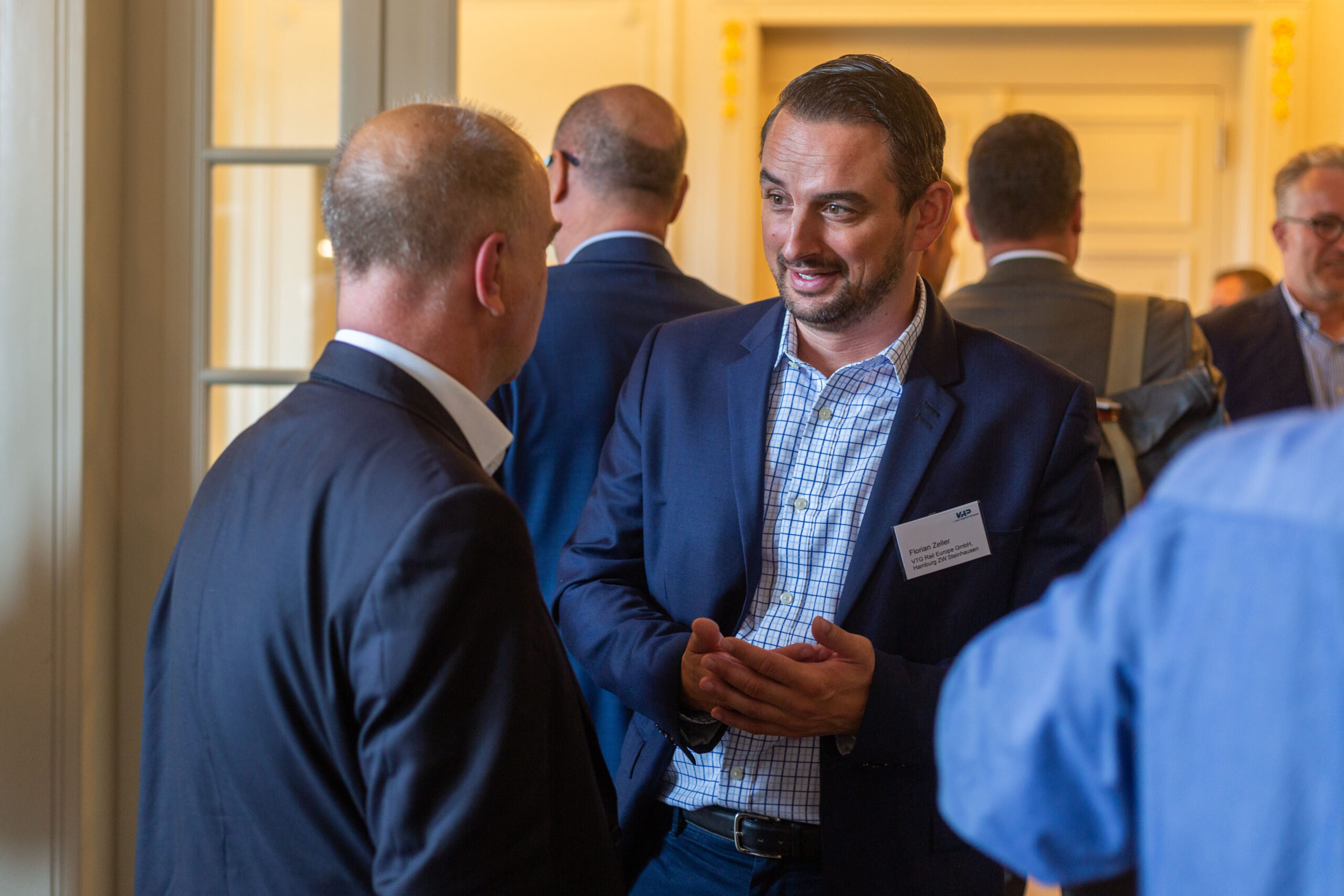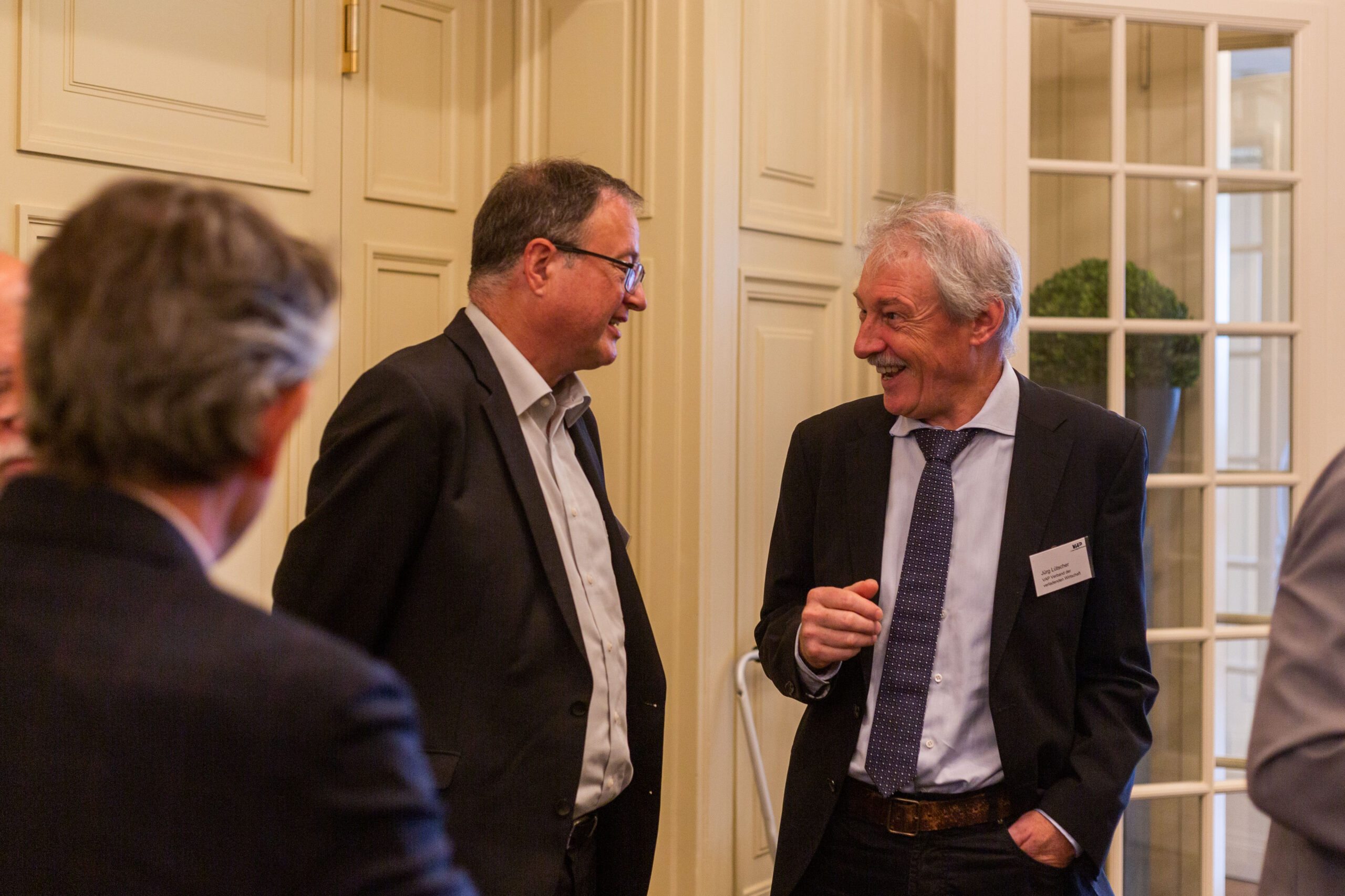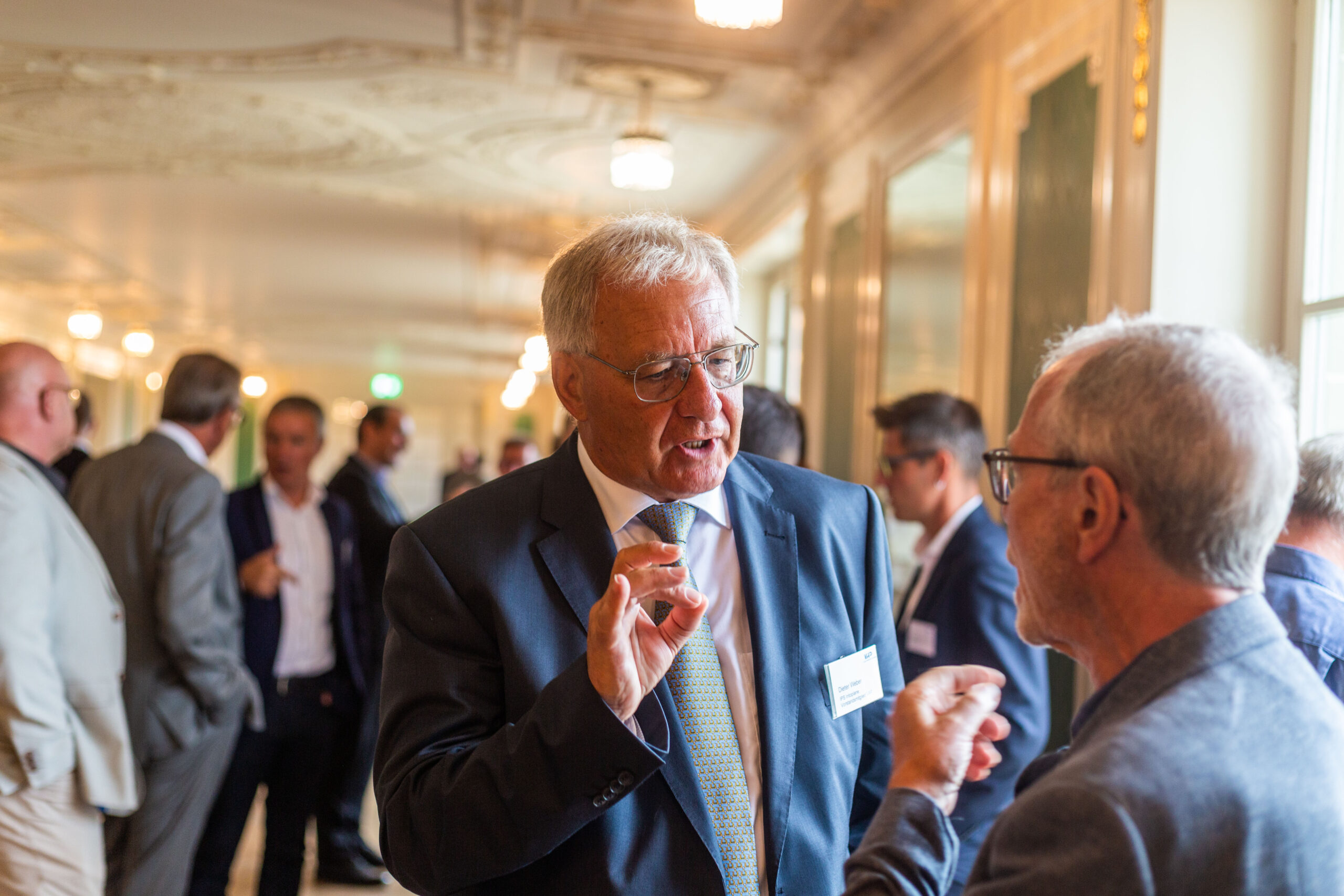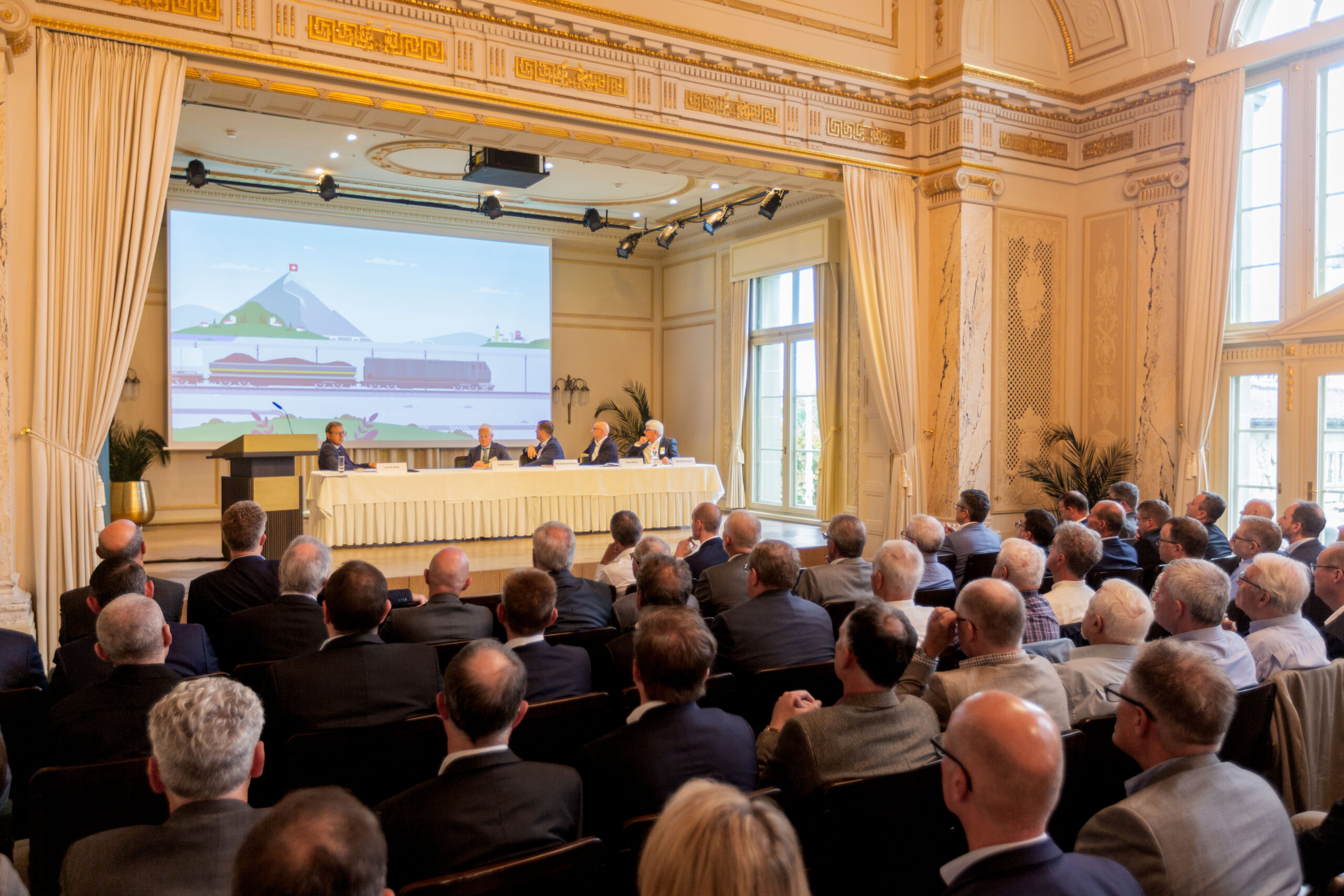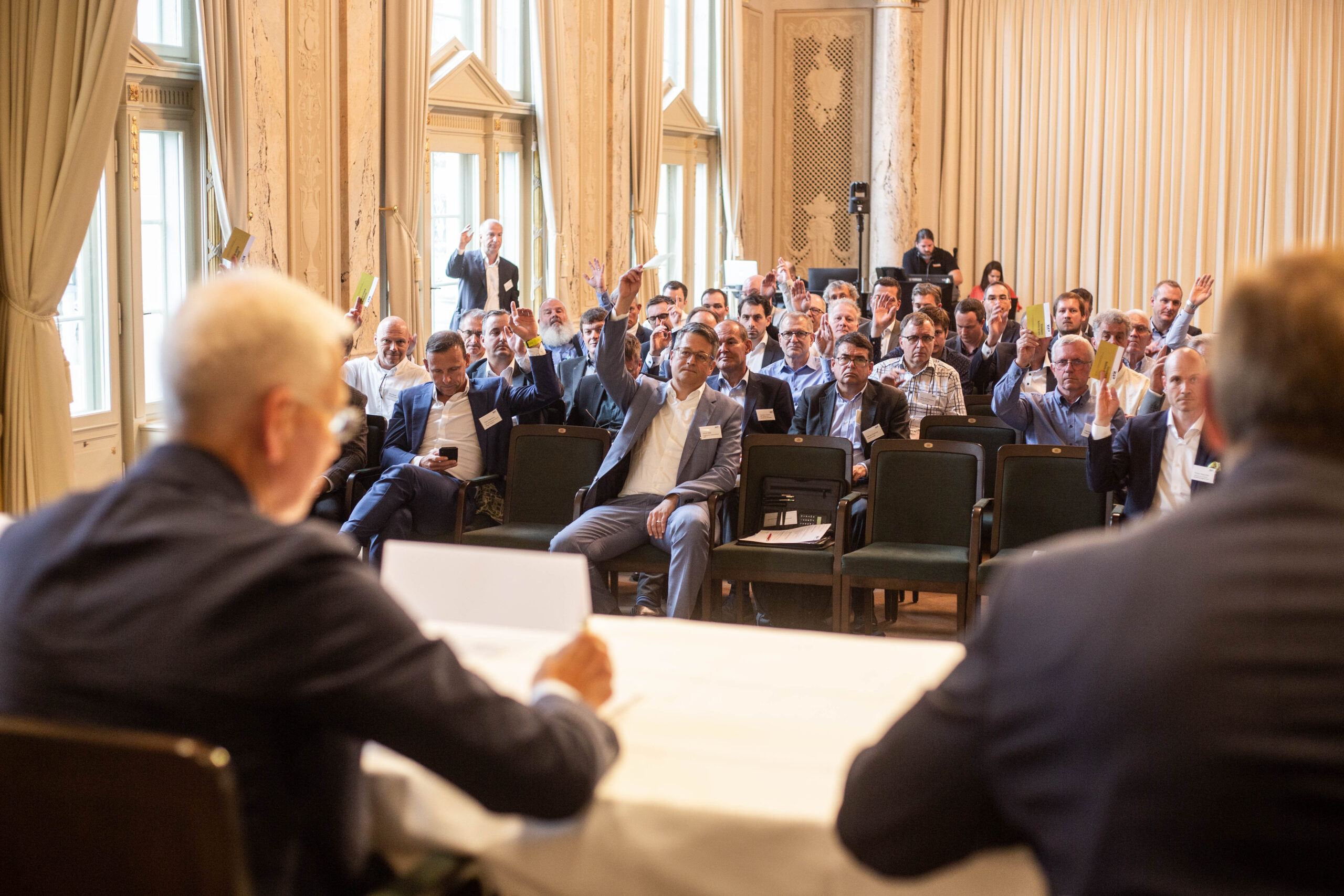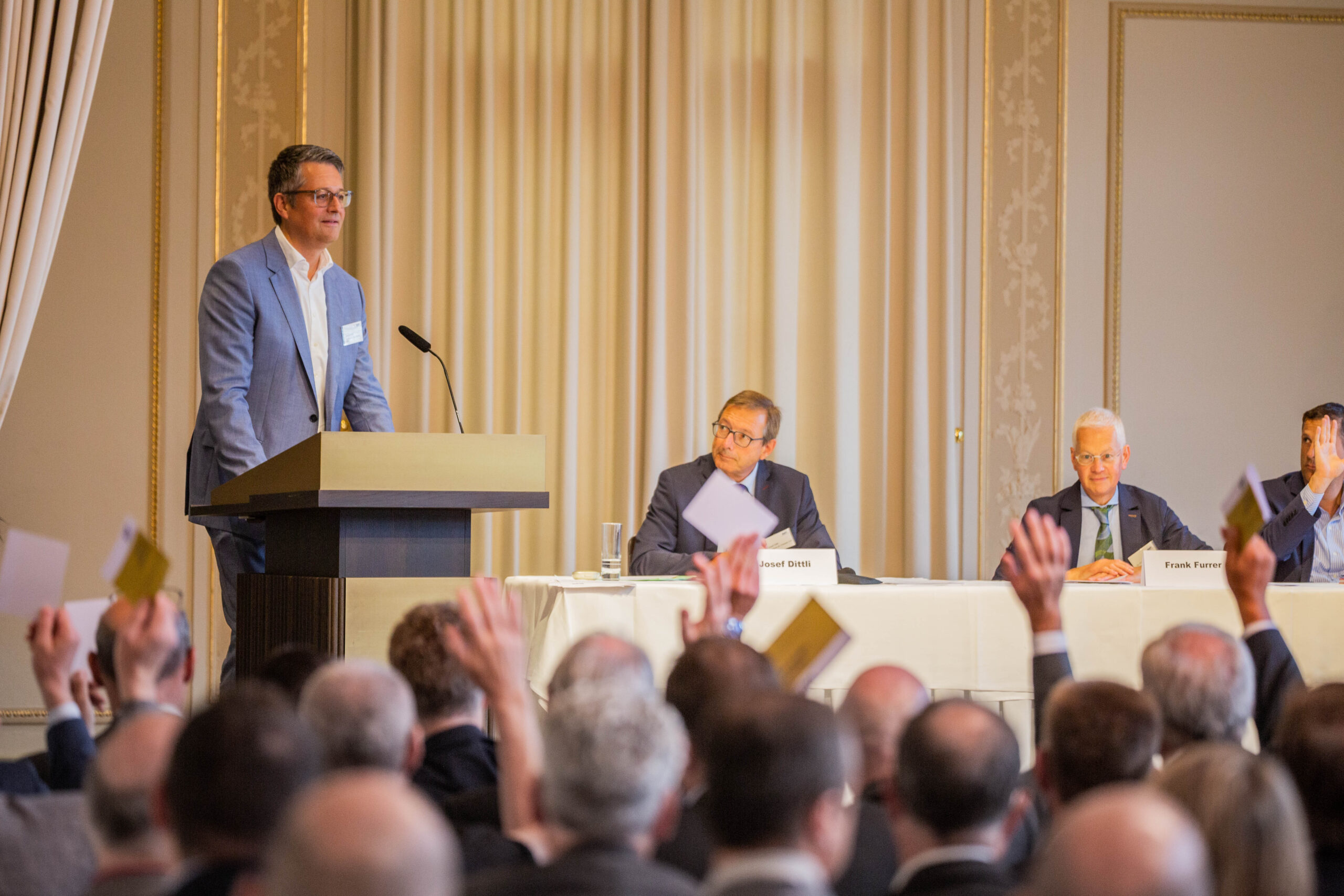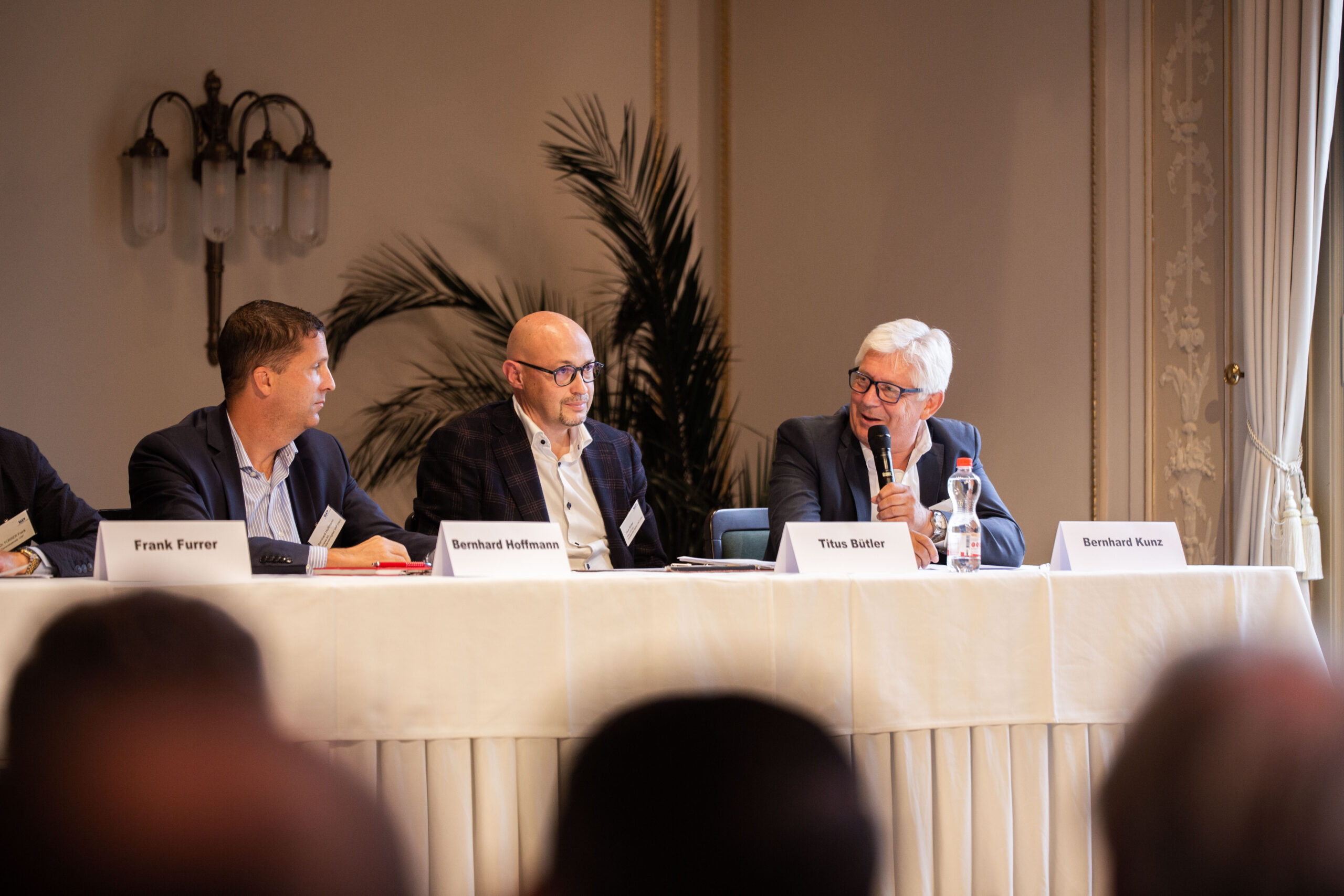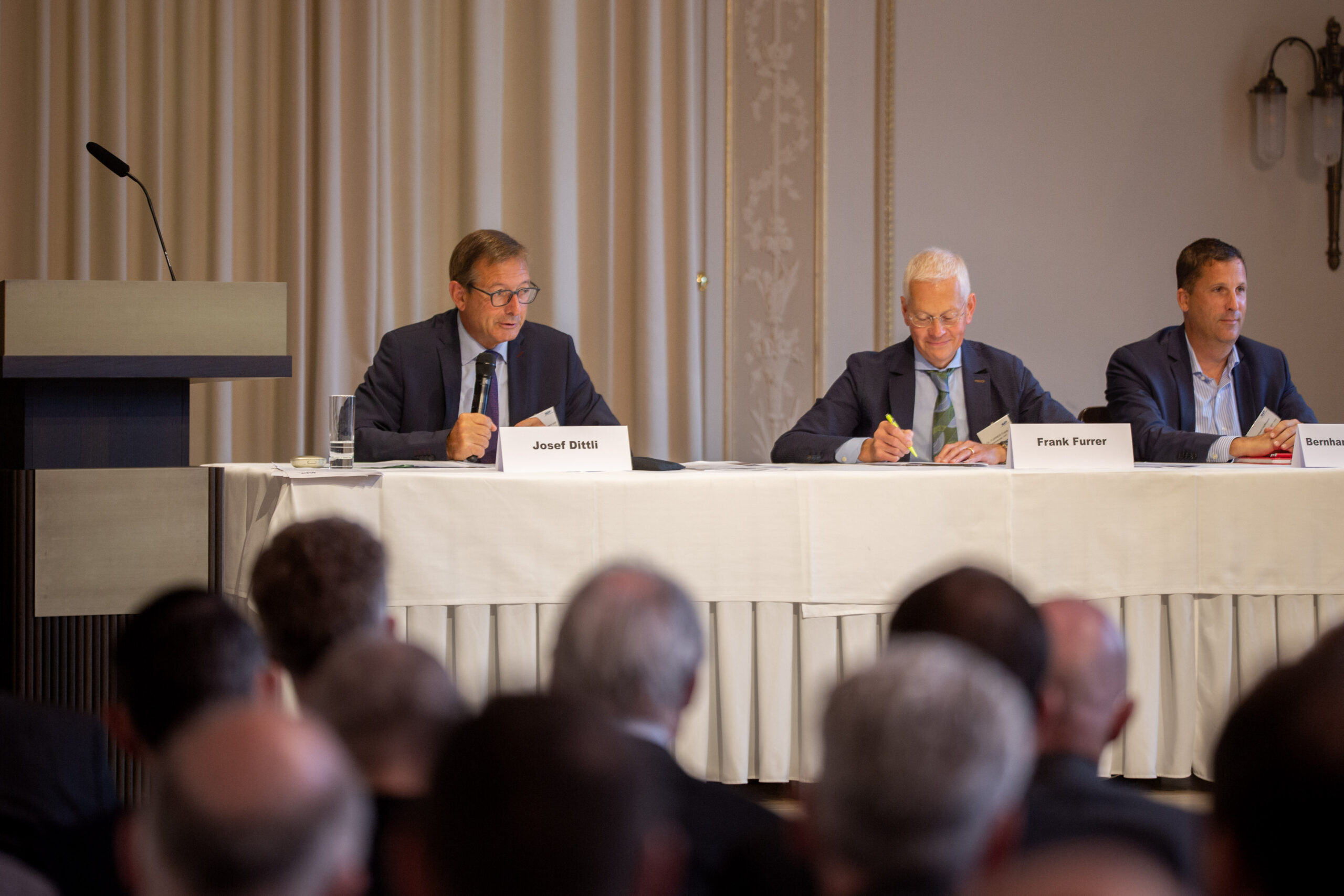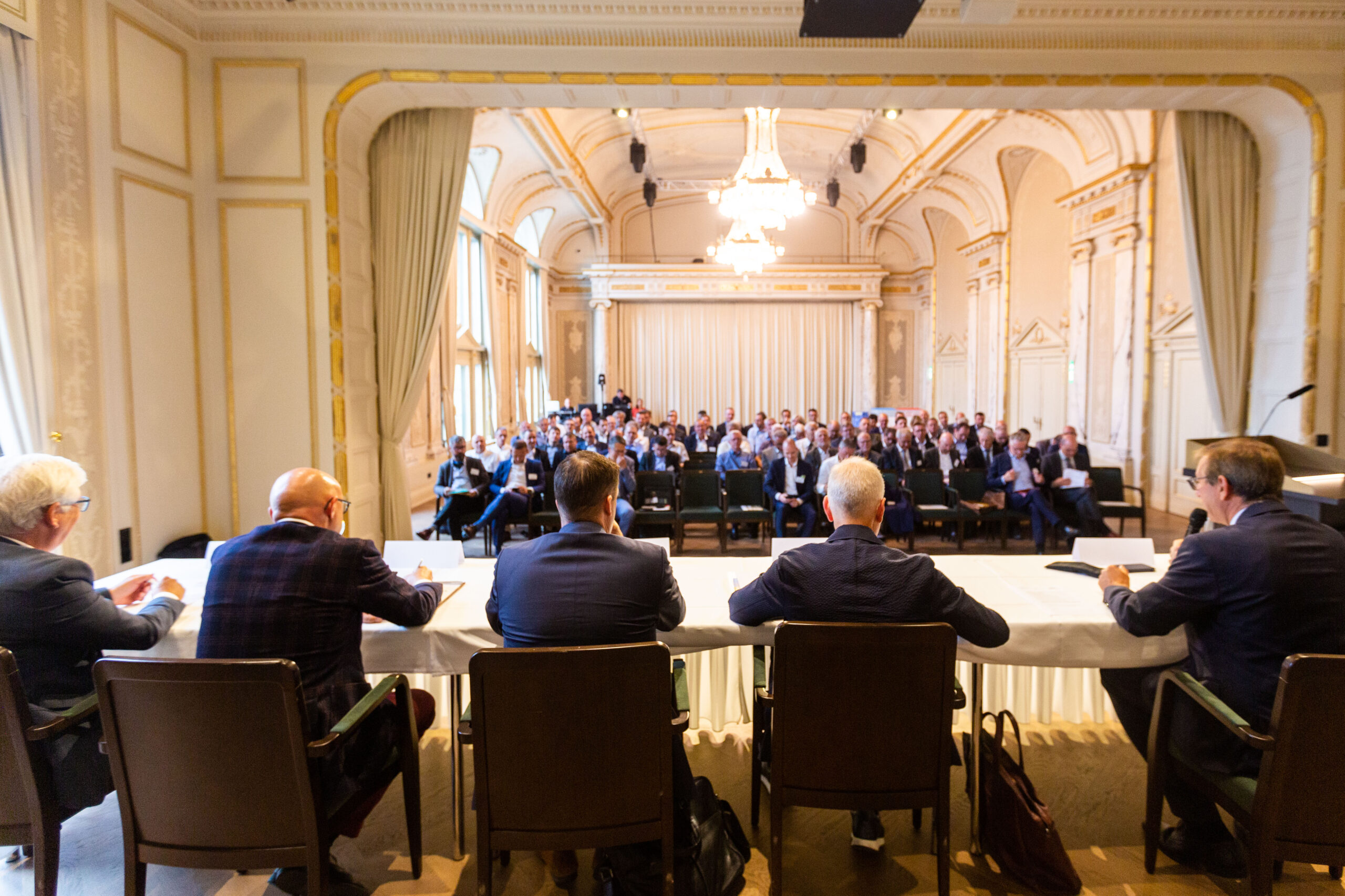News
Blog
In the VAP blog you will find current and worth knowing technical information about freight transport. Some contributions are reserved for our members. As such, log in with your login or request a new login.
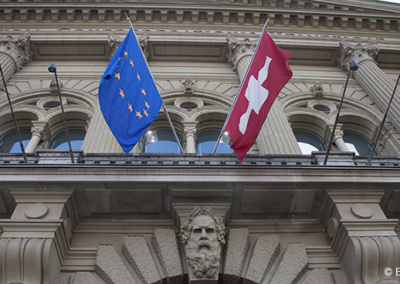
Bilaterals III: Switzerland must be involved in the future of rail freight transport
The Federal Council has given the go-ahead for the Bilateral Agreements IIIwith the definitive negotiating mandate. Negotiations on the so-called Bilaterals III began on 18 March 2024. We at the VAP support the efforts of the mandate in the area of overland transport. Switzerland must be able to help shape the far-reaching renewal of the rail freight transport system.
That’s what it’s all about:
- Stabilising Swiss-EU relations
- Mandate takes into account the fears of SBB and trade unions
- VAP welcomes continuation of the dialogue
- Joining forces in favour of rail as the mode of transport of the future
Stabilising Swiss-EU relations
At its meeting on 8 March 2024, the Federal Council adopted the mandate for negotiations with the European Union (EU). The negotiations on the comprehensive package are intended to stabilise and further develop bilateral relations between Switzerland and the European Union. They started on 18 March 2024. In its mandate, the Federal Council has adopted a number of recommendations, including market liberalisation in the electricity sector, the preservation of the cooperation model in the overland transport sector and the retention of customs tariffs in the agricultural sector. Other adopted recommendations relate to immigration, wage protection and institutional elements.
Mandate takes into account the fears of SBB and trade unions
In its «Report on the results of the consultation on the draft negotiating mandate between Switzerland and the European Union on the stabilisation and development of their relations», the Federal Council states that the model of SBB cooperation in international rail passenger transport remains possible, that Switzerland may continue to allocate train paths and that the rules for international passenger transport must not impair the Swiss quality of public rail transport. In its negotiating mandate, it also guarantees tariff integration, a synchronised timetable and a modal shift from road to rail. The regulatory dialogue in the financial sector between Switzerland and the EU will be resumed. In doing so, he dispels the unfounded fears of SBB and the trade unions of the «dark forces» of competition.
VAP welcomes resumption of dialogue
In our statement of 12 February 2024, we at the VAP welcome the fact that the government – in particular the Federal Office of Transport (FOT) and the Department of the Environment, Transport, Energy and Communications (DETEC) – is continuing its efforts to make progress on the key dossier for the rail sector in realistic stages despite the existing political deadlock between Switzerland and the EU. After all, market liberalisation offers Switzerland interesting opportunities such as guaranteed interoperability, greater innovative strength and higher efficiency. In this context, we also support the revision of the Railway Act and welcome the fact that there are already concrete proposals for amendments at ordinance level.
We consider the realisation of ERA membership for Switzerland following the successful negotiations to be the next milestone. The ERA has created expert status specifically for Switzerland. This means that Swiss experts can already participate in the ERA committees for the further development of the common specifications. In addition, Switzerland has been systematically adopting rules from the EU’s Interoperability Directive and Safety Directive for years. Overall, Switzerland has a great interest in securing sustainable access to the European railway sector as soon as possible through full ERA membership – not only to participate but also to have a say in decision-making.
We support the present negotiating mandate in the area of land transport. In our view, the market liberalisation in international passenger transport, which has not been implemented for years, is necessary and offers opportunities for interesting developments despite the restrictions imposed.The procedure for integrating the institutional elements into the sectoral agreements is justifiable based on our previous experience in the development of legislation with the involvement of Swiss experts.
Joining forces in favour of rail as the mode of transport of the future
Rail freight transport should regain market share thanks to innovation – that is what the EU wants and that is what Switzerland wants too.However, we need long-term strategies and strong investors to achieve this.Stability is the indispensable basis for international transport cooperation (see blog post «Stability as an indispensable basis for international transport cooperation»).The innovation for future rail freight transport with digitalisation and automation is currently being developed in the EU.Switzerland wants to participate and have a say in shaping this far-reaching renewal of the rail freight transport system.
This is only possible in an efficient and sustainable manner if political differences are resolved and there is sufficient clarity about future cooperation. This includes Switzerland rejoining the Horizon 2020 research and innovation programme, an update of the overland transport agreement between Switzerland and the EU and bilateral agreements on border operating routes with our neighbouring countries.

The future belongs to combined transport
What future do freight railways have in Switzerland? The VAP discusses these and other questions in a double interview with Peter Knaus, Head of Graubünden Freight Railway at the Rhaetian Railway (RhB), and Peter Luginbühl, Head of Operations at the Matterhorn-Gotthard Railway (MGBahn). In the debate, the experts talk about in-house operation and outsourcing, economic viability, innovation, competition and making rail freight transport more flexible.
Mr Luginbühl, rail freight logistics is outsourced on the Matterhorn-Gotthard Railway. Why is that?
Peter Luginbühl: As a company that operates primarily in the tourism sector, our main focus is on passenger mobility. Freight transport accounts for around 2% of the overall result in the public service sector. In 2011, the decision was made to concentrate on rail transport for freight transport. We have placed the upstream and downstream interfaces with the customer under the responsibility of Alpin Cargo AG as the overall logistics service provider. This allows us both to concentrate on our core competences: We are responsible for transport by rail, Alpin Cargo for the interface to the customer, i.e. also for the last mile. In Zermatt, for example, fine distribution is carried out using electric vehicles and horse-drawn carriages.

Peter Luginbühl, Head of Operations Matterhorn-Gotthard Railway
To what extent is this outsourcing an advantage?
Peter Luginbühl: This operator model has proved its worth for our starting position with a limited size and a fairly manageable contribution of freight transport to the overall result. It is also ideal from the freight customers’ point of view.
Would you outsource again?
Peter Luginbühl: Yes. Our operator model works very well. Nevertheless, we question it every five years and carry out a site assessment. We are only about a quarter of the size of the RhB’s Graubünden freight railway. So it doesn’t make sense to run it ourselves.
Mr Knaus, you operate rail freight transport yourself. What does this in-house operation look like?
Peter Knaus: We have orders from the canton of Graubünden to provide the public service, among other things. In the past, transport companies were literally forced onto the railway. Things are different today. We use the railway for what makes economic sense. This creates a win-win situation for us and our customers. For short distances or the last mile, we work together with road haulage companies. We regularly exchange information with these business partners at our annual transport platform and through personal contact.
What disadvantages do you see with your model?
Peter Knaus: An enormous amount of effort for our own rolling stock. Here’s an example: our entire fleet of around 320 carriages is equipped with vacuum brakes. Now, for strategic reasons, RhB has decided to switch all carriages to air brakes by 2040. According to our 2023–2030 strategy, we will modernise half of the fleet and renew the other half, as this is the more economical option.
What key criteria do you use to select the mode of transport?
Peter Luginbühl: We are convinced that although rail is ideal for all goods, it is not equally suitable for all of them. We currently transport around 40 to 50% of goods between Visp and Zermatt by rail. Rail’s strengths over road lie in its large capacities, high availability and reliability. We can guarantee the exact arrival time in Zermatt 99% of the time. With every mode of transport, you have to weigh up which is the best economic and ecological modal split.
Peter Knaus: Lorries are also becoming increasingly ecological. This in turn means that the roads will continue to be well frequented. The canton is happy for every lorry that gets off the road so that there is less congestion in private transport.

Peter Knaus, Head of Freight Transport at Bündner Güterbahn
Which products are more suitable for rail transport, and which still have potential?
Peter Knaus: Long-distance goods that depend on punctuality and reliability, such as foodstuffs. Likewise letter and parcel post and general cargo that needs to be delivered on time. Scheduled freight, which we transport from 4.00 am. Rubbish and recycling material must be transported within 24 hours. Building materials such as cement or salt are also very suitable for rail freight transport. We also transport an extremely large amount of round timber, around 95%, to Tirano. We are predestined for this, as customs clearance is also more economical than with a lorry. We transport most goods in combined transport, except for logs and general cargo. Combined transport has great potential for the future. I see potential for pellet transport in our area.
Peter Luginbühl: We have a very similar product focus to RhB. But we don’t transport wood. We also transport large quantities of heating oil. We also transport a lot of luggage for the tourist destination of Zermatt. Over the last few decades, consignments have become smaller, not least due to the mail order business.
Reliability and punctuality: what do you think?
Peter Luginbühl: As a small railway, we can guarantee stability and punctuality extremely well. 95% or more of our customers are extremely satisfied with our reliability. The situation is very different in the European or Swiss-wide freight railway system. Punctuality is a huge problem here. The industry still needs to improve a lot and become a more reliable partner.
Peter Knaus: I agree with that. We are extremely punctual, especially when it comes to food transport or scheduled freight. When we work with the big players, it becomes more challenging to meet the desired deadlines. For the WEF transport project, for example, we were reliant on suppliers from the standard gauge. If they don’t arrive on time in Landquart, we can’t deliver the containers to Davos on time either. This poses a major problem for our customers, as time slots allocated at the WEF have to be adhered to.
What developments do you recognise in production?
Peter Luginbühl: At the moment we still have mixed production, whereby we mainly work with block trains. We are increasingly moving away from attaching freight wagons to passenger trains. For one thing, the new multiple-unit trains and the capacities of our track systems no longer meet these requirements. We are also losing the logistics space for transhipment. We will increasingly concentrate on block goods trains.
Peter Knaus: We run 52 freight-only trains a day on the main network. The new trains with automatic coupling are only designed to move themselves. The sheer number of goods trains means that we retain a certain degree of flexibility. We have fixed annual timetables for scheduled freight, everything is planned through. We only run mixed services towards Arosa and Bernina, as there are not enough train paths for pure goods trains.
Speaking of train paths: What challenges do you face here?
Peter Knaus: During the day, regional passenger transport sets the pace for us. We have to adapt to this. We also have to adapt to prestige trains such as the Glacier and Bernina Express. Our most flexible time slots are from 4.00 am to 6.30 am. From 9.00 p.m. there is mainly construction work going on, so we can only operate to a very limited extent. The RhB and the canton support us well in the track issue and involve the various interest groups.
Peter Luginbühl: I see four challenges with the railway lines. Firstly, economic efficiency. Our desired train paths are often occupied by tourist trains, which are more economical. Secondly, economic viability. We have enormous investments and major financing issues. We make an important contribution to the security of supply in our region. Thirdly, flexibility through speed. We cannot react as quickly to changes in supply as a transport company can. Fourthly, innovative strength. We still produce in the same way as we did 30 years ago. I am curious to see whether we will actually be able to transform through digitalisation.
What best practice cases are there that you and others can learn from?
Peter Luginbühl: I see fine distribution over the last mile as a successful model. Our partner does it in such a way that more and more customers come, precisely because he is so flexible. And finally, I consider the disposal of rubbish to be an exciting business model from an ecological and economic point of view.
Peter Knaus: In my opinion, a good example is the conversion of beverage transport. The Valser company has been transporting its beverages from Vals via Ilanz to Untervaz for over 40 years. The early morning transhipment at the ramp in Ilanz caused a lot of noise emissions. This gave rise to the idea of using swap bodies for transshipment. Together with the parent company Coca-Cola and the canton, we procured suitable swap bodies. These have proved very successful. In the foreseeable future, we will even be transporting them using electric lorries with trailers. In dialogue with the canton and the police, we have obtained a special permit for trailers for the Schnaus-Ilanz route. . The only sticking point at the moment is the HVF reimbursement in combined road-rail transport. This refund is still linked to the LSVA. In future, it must be linked to combined transport. The legal framework still needs to change.
Which innovations will prove their worth in rail freight transport in the coming years?
Peter Knaus: I consider power packs, i.e. batteries that are mounted on the freight wagons, to be a sustainable solution. These can be used as an energy supplier for refrigerated containers, but also for construction work in the tunnels. We have even equipped sliding wall wagons with modern Powerpacks. We have also made great progress in the area of freight wagon tracking. We now know where the freight wagons are, how fast they are travelling, what their battery levels are, what the temperatures are in the refrigerated containers, etc. We can utilise this data in a digital scheduling system. We have also already thought about an Uber system for general cargo. That would be very innovative, but the sticking point here is the production costs and suitable partners.
Peter Luginbühl: Rail freight transport will still be around in 30 to 50 years’ time. To achieve this, we need to move away from the current rigid systems. Starting with the wagon superstructures, through rigid logistics processes in freight handling or wagon management, to wagon flexibility. There is potential everywhere to meet future requirements with innovations.
What does it take for such innovations to be realised?
Peter Knaus: I am a member of the FOT expert committee for technical innovations. The federal government is very open here and supports innovations that bring long-term benefits. The canton of Graubünden is also very open to innovations and supports them to the best of its ability if they bring economic and ecological benefits.
Peter Luginbühl: In regional passenger transport, it took pressure from a private economic player like Google to get things moving. That would probably be good for us too. It would be exciting if a market third party were to build up pressure.
What do you think about Europe-wide integrated data platforms?
Peter Knaus: An exciting starting point for the players in freight transport, and not just on the railways. The development of this is challenging, and I’m not sure whether everyone would make their data available. Currently, our customers can use tracking to see where the loading equipment is currently located. This allows a mineral oil transport customer, for example, to organise their and our scheduling more efficiently. I would welcome greater consistency with our customers, especially when it comes to timber loading.
Peter Luginbühl: We would have to equip the wagons with tracking devices. Only then could we take further steps towards data exchange, including across modes of transport. We at MGBahn are less concerned about this because we have a local focus.
Where do you see the greatest levers for advancing rail freight transport?
Peter Luginbühl: In making the rail freight system more flexible. We will never be as flexible as road transport. But we must be able to react more quickly to customer needs and play to the strengths of the railways. The potential for rail transport is huge. The pressure to shift transport to rail will come of its own accord.
Peter Knaus: You certainly have to differentiate between metre gauge and standard gauge. We have a manageable network with metre-gauge tracks. Compared to the SBB, we can react very quickly. A planned changeover of two weeks is quick compared to SBB – and slow compared to a road transport company. The latter switches within days. The more money we have, the faster we can invest in traction units and freight wagons or modernise the fleet and the more flexibly we can react to the wishes of our customers.
To what extent would more competition among the rail freight companies change the dynamics of the rail freight market?
Peter Luginbühl: More competition, more dynamism. However, the entry threshold for new players in our market is very high. If you want to operate a freight railway, you need a compliant traction unit and expensive rolling stock. That’s a different matter from buying a lorry for a few hundred thousand francs. Examples such as Railcare or Swiss Post show that competition leads to innovation and price pressure.
Peter Knaus: Competition is good and encourages development. Those responsible at Railcare have a very good transport logistics concept, they combine road and rail with their own fleet. Competitor companies on the railway are also dependent on free train paths. They cannot simply set off when they are fully loaded. In terms of price, small rail freight operators have the advantage that they have to factor in lower overheads.
What do you think of the VAP and what would you recommend to our association?
Peter Knaus: I have always had good contact with Secretary General Frank Furrer. I was in charge of the transport logistics project at the regional parcel centre in Untervaz. I worked very closely with the VAP. He was an independent and very valuable project member. I find the dialogue with Frank Furrer, Jürg Lütscher and other VAP representatives, who bring in a shipper’s perspective, constructive and exciting.
Peter Luginbühl: I didn’t know that this association existed until recently. My recommendation would be for you to make your association better known among freight transport companies. I think it’s great what the VAP is doing.
What hasn’t been said yet?
Peter Luginbühl: This discussion has given me valuable ideas, thank you for that.
Peter Knaus: Thank you for inviting us to this interview and giving us the opportunity to present ourselves.
|
About Peter Knaus and the Graubünden freight railway Peter Knaus is Head of Freight Transport at the Graubünden Freight Railway of the Rhaetian Railway (RhB). He also represents the narrow-gauge railways on the Freight Transport Commission (KGV) of the Swiss Association of Public Transport (VöV) and is a member of the Rail Freight Transport Advisory Group of the Federal Office of Transport (BAV). Under the umbrella of RhB, the Graubünden Freight Railway offers a wide range of transport solutions for companies and private individuals in Graubünden. With its diverse fleet of wagons – including container wagons, sliding wall wagons and tank wagons – it transports goods of all kinds. The service points cover the whole of Graubünden and include important industrial centres, logistics centres and agricultural businesses. As a result, the Graubünden freight railway guarantees a comprehensive supply of goods throughout the region and is an indispensable part of the regional logistics infrastructure. |
|
About Peter Luginbühl and the Matterhorn-Gotthard Railway Peter Luginbühl has been Head of Operations at the Matterhorn-Gotthard Railway since 2017. The qualified controller previously worked for several years as Head of Corporate Development HR at SBB. The Matterhorn-Gotthard Railway operates its freight transport with Alpin Cargo AG, a subsidiary of the Planzer Group. It offers a wide range of services for local businesses. These include goods handling, warehouse logistics and transport by both rail and road. The supply of mineral oil is another important service. Alpin Cargo not only serves companies on the last mile, but also private individuals. They can use its services for removals, the storage of household goods and home deliveries with assembly and e‑transport. |

Joy at SBB, concern at SBB Cargo
SBB is in excellent financial health. This was communicated on 11 March 2024 with the 2023 annual accounts. Only subsidiary SBB Cargo is still considered a problem child and is to receive financial support. We at the VAP think so: This must not be tantamount to permanent subsidisation of single wagonload traffic (EWLV). And the proposed financial injection of CHF 1.25 billion is invalid in view of the 2023 annual accounts.
That’s the point:
- 2023 results: black and record-breaking
- Eternal problem child remains in deficit
- Record results and billions in aid – how does that fit together?
- Corporate responsibility required
2023 results: black and record-breaking
1.3 million travellers, CHF 269 million profit, 9.9 % additional revenue from passenger transport, 92.5 % punctuality despite 20,000 construction sites, debt down to CHF 11.3 billion, all investments financed from cash flow: SBB’s 2023 financial year is bursting with good news and superlatives. For the first time in the post-Covid era, SBB is back in the black. This pleasing performance is primarily due to a record number of passengers and substantial profits from SBB Real Estate. It is therefore not surprising that those responsible are looking to the future with confidence.
Eternal problem child remains loss-making
The financial situation in the freight transport division of the re-nationalised SBB Cargo looks much less rosy. Although the 2023 result of SBB Cargo Switzerland improved by CHF 148 million compared to the previous year to minus CHF 40 million, this is mainly due to impairments from 2022. Transport performance fell by 7.5 % compared to the previous year. According to SBB, the main drivers were price pressure, the structural deficit in the EWLV and the economic slowdown.
The only thing that remains unclear is how high this so-called structural deficit should actually be quantified. In the political debate, SBB speaks of CHF 80 to 100 million, while the 2023 Annual Report states CHF 40 million. Has SBB Cargo generated a profit of CHF 40 to 60 million in block train transport?
Record results and billions in aid – how does that fit together?
Peter Füglistaler, Director of the Federal Office of Transport (FOT), gives a plausible answer to this question in his comment on LinkedIn: «I don’t know». The fact that SBB is doing well financially is indeed commendable. After all, shippers want strong partners in the transport business. Nevertheless, we at the VAP are sticking to our position: SBB Cargo’s financial difficulties should not be confused with the necessary modernisation and restructuring of EWLV. In January 2024, the Federal Council rightly requested measures for the modernisation of the nationwide EWLV in its «Message on the Freight Transport Act» (see blog post «Setting the right track for inland freight transport by rail»). Instead of a reorganisation contribution to the EWLV, we are calling for targeted, degressive and temporary bridging funding for a sustainable transformation of the EWLV towards self-sufficiency. Only in this way can the EWLV modernise and grow.
Entrepreneurial responsibility required
Parliament is currently discussing the «Dispatch on the amendment of the Federal Act on Swiss Federal Railways (sustainable financing of SBB)». According to this, the federal government is to cover SBB’s pandemic-related deficits in long-distance transport. VAP President and Councillor of States Josef Dittli commented: «Why should the federal government, which has just announced linear cuts and plans to make cuts, use taxpayers’ money to support a state-owned company that is achieving record results? This is where I make an urgent appeal to the corporate responsibility of those involved.»
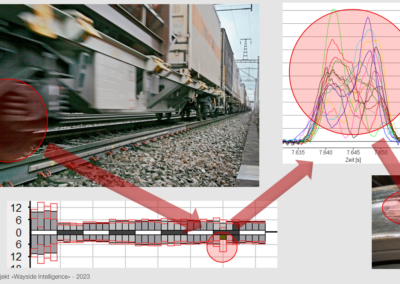
Digital rolling stock inspections: Win-win for everyone involved
The fixed train control systems for goods trains and their rolling stock are constantly being refined. The digital control system Wayside Intelligence (WIN) not only increases safety in rail freight transport, but also helps wagon keepers to plan their maintenance work more efficiently. It is therefore all the more important that they contribute their experience to the further development of the system.
That’s what it’s all about:
- Maintenance of rolling stock: central to safety
- Complex checks between regular maintenance appointments
- Digitalisation increases predictability
- Targeted use of data from the infrastructure manager
- Maintaining the state of the art and planning with foresight
- Testing and further developing WIN
Maintenance of rolling stock: central to safety
Wagon keepers are responsible for the proper maintenance of their vehicles, as required by the current Safety and Interoperability Directive. In doing so, they make a significant contribution to safe rail transport (see blog article «Gotthard Base Tunnel (#2): Automatic train control systems»). The central element is the periodic maintenance of wagons by certified specialist workshops (Entity in Charge of Maintenance, ECM). These are commissioned by the keeper. Based on operating experience, the common safety objectives and methods, those responsible should schedule the scheduled workshop visits of the rolling stock in such a way that the safety-relevant components, assuming expected wear and tear, have a degree of wear and tear suitable for operation according to general experience and the normal course of events until the next periodic workshop visit.
Extensive checks between regular maintenance appointments
However, several years pass between two regular workshop visits. In daily freight transport, the railway undertakings (RUs) and infrastructure managers are responsible for the safe operation of freight wagons. Before the trains depart, the RUs inspect all wagons for visible damage and defects in the loads. Damaged wagons are stripped and sent for unscheduled maintenance in accordance with the General Contract of Use for Freight Wagons (GCU). Such extraordinary manoeuvres disrupt the planned operating schedule, can lead to delays and mean extra work and loss of income for the affected rail transport companies.
Digitalisation increases predictability
To enable keepers to better fulfil their responsibility for the operational suitability of their wagons in operation in future, they are obliged to document all maintenance measures and to evaluate the experience gained during maintenance. For the ongoing evaluation of their maintenance plans, they need reliable technical data on the behaviour and current degree of wear of system-relevant components. Thanks to advancing digitalisation, this data is increasingly available to them.
Targeted use of data
The Swiss standard-gauge network is equipped with stationary train control systems operated by the infrastructure manager SBB Infrastructure (SBBI). This system is called Wayside Intelligence, or WIN for short. It records safety-relevant measured values from every passing train. The focus of these checks is on operational safety and the prevention of incidents. Unacceptable deviations lead to the train being stopped promptly and the defective or incorrectly loaded wagon being discarded if necessary.
Wagon keepers can also use this continuously recorded data with little initialisation effort to obtain a real picture of the condition of system-relevant components in their wagons. To do this, they must equip their wagons with an RFID tag (EN 17230) and set up an interface for data transmission that is coordinated with the SBBI, for example via an application programming interface API web-based GUI.
Maintaining the state of the art and planning with foresight
SBBI can currently transmit the recorded data on the wheelset condition of its identified wagons to every registered keeper. The keeper can configure the data flow according to their needs. The change in the dynamic wheel load coefficient over time provides a reliable picture of the wear development of the wheel tread. The collected data allows the wagon keeper to continuously develop the maintenance plans so that he can always maintain the state of the art. In addition, he can initiate an extra-periodic maintenance measure with foresight, without the need for an unscheduled outage.
Testing and further developing WIN
Development work is currently underway to automatically evaluate the images captured by the camera system at the ZKE site for systematic analysis and comparison of operating data. The aim is to recognise anomalies in the braking equipment and running gear during operation. Interested parties from freight railways and wagon keepers can actively contribute to the development of this system by sharing their information requirements and participating in tests. Interested parties should contact:
Jörg Bisang
SBB AG, Train Control Units
+41 79 698 22 41
joerg.bisang@sbb.ch
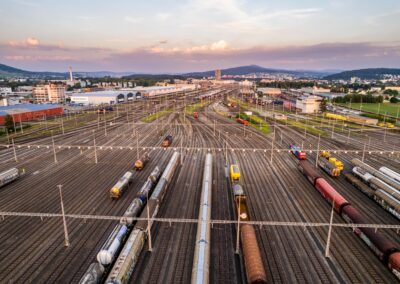
Setting the right track for inland freight transport by rail
The Federal Council released its message on the Goods Transport Act to the Parliament in January. It aims to modernize the comprehensive single-wagon load transport (EWLV) and establish the foundation for its economic viability. Despite various reservations, the Federal Council proposes investment subsidies, temporary operating compensations, and incentives for shippers.
Key Points:
- Federal Council aims for economic viability
- EWLV to undergo fundamental restructuring and modernization
- Support for EWLV operation during the modernization phase
- BAV criticizes industry guidelines
- Overview of the proposal
- What’s next
Federal Council aims for economic viability
On January 10, 2024, the Federal Council adopted the message on the Goods Transport Act (in German) for Parliament. We, from VAP, welcome the continued pursuit of the favored Variant 1. With this proposal, the Federal Council intends to modernize rail freight transport technically and organizationally, strengthen multimodal transport chains, and better integrate shipping. The overarching goals are to enhance supply security nationwide, promote multimodality, and contribute to the federal environmental and energy targets. This involves securing current area coverage, gradually increasing the share of rail freight transport, and laying the groundwork for economically independent operation.
EWLV to undergo fundamental restructuring and modernization
The basis for this is a comprehensive restructuring of the EWLV, or network traffic, with associated technological modernization (especially digitization), integration into the Swiss logistics system, and the establishment of non-discriminatory intramodal competition. The latter is expected to significantly improve the quality and efficiency of logistics services and simplify future innovations. The proposal allocates investment funds of CHF 180 million for the introduction of digital automatic coupling (DAK). Additional investment funds are earmarked for digitized process optimizations, data exchange platforms, and similar initiatives.
Support for EWLV operation during the modernization phase
To maintain current area coverage, the operation will be financially supported for eight years during the modernization phase. Allegedly uncovered costs will be covered, and compensations will decrease in line with the progress of the restructuring, determined in multi-year performance agreements with all freight railways involved in network traffic.
BAV criticizes industry guidelines
To ensure the success of this transformation and stable EWLV operation during the restructuring phase, the industry has proposed guidelines for specific measures and support criteria. However, the Federal Office of Transport (BAV) criticizes these as insufficient and demands further revisions. It particularly highlights the lack of perspective for a comprehensive redesign to enhance efficiency and utilization, foreseeing a tendency towards structural maintenance and further service reduction. The VAP understands the BAV’s reservations, as the guidelines represent a compromise between shippers and freight railways, with significant concessions made by VAP in the interest of the cause. Substantial revisions are now necessary, especially from the perspective of freight transport customers as users of logistics services.
We are prepared to significantly support further development. A comprehensive operational control system is seen as a crucial prerequisite for this transformation, serving as an evaluation tool for the effectiveness of measures and incentives, along with the establishment of a digital platform. The transformation should be methodically structured and implemented in a targeted manner as a project.
Overview of the proposal
- Investment subsidies: The Federal Council allocates CHF 180 million for the introduction of DAK, covering approximately one-third of the restructuring costs. The conversion of rolling stock must be coordinated across Europe and is expected to be completed by 2033. DAK is anticipated to substantially improve the productivity and quality of rail freight transport.
DAK Factsheet (PDF, 971 kB) - Operating compensations: To maintain EWLV at the current comprehensive level during the restructuring phase, the Federal Council proposes to financially support it for eight years on a degressive basis. By the end of this period, economic viability should be achieved. For the first four years, it requests CHF 260 million.
Freight Transport Factsheet (PDF, 712 kB) - Incentives for shippers: Permanently planned are handling and loading contributions, along with compensation for the uncovered costs of the ordered freight transport service, totaling CHF 60 million per year.
Read the complete message on the Goods Transport Act.
What’s next
- In the first half of 2024, open points between BAV and the industry will be discussed, and guidelines will be supplemented and clarified accordingly.
- Within this framework and following the approval of the revised law, a tendering process for various service packages within network traffic is expected to start by the end of 2024.
- Negotiations on potential performance agreements are planned for 2025, allowing any support measures to take effect in early 2026.
For further details, refer to this joint press release from VAP, LITRA, ASTAG, IG Kombinierter Verkehr, and VöV.
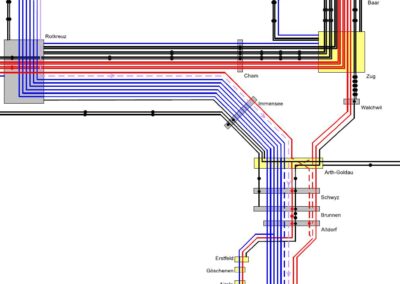
Flexibilisation of train path protection for freight transport
That’s what it’s all about:
- Network utilisation concept and plan (NNK/NNP) secure train paths for goods trains in the long term
- Unused freight train paths – demand from passenger transport
- Motion 23.4259 Method for determining train paths for long-lasting construction sites
- Temporary flexibilisation only with binding agreement to solve the bottleneck
Network utilisation concept and plan (NNK/NNP) secure train paths for goods trains in the long term
As part of the «Financing the railway infrastructure» bill in 2013, infrastructure expansion targets for freight transport were defined in Art. 48a lit. b of the Railway Act (EBG). These include improvements for domestic, import and export traffic as well as improving the availability of train paths. As part of the draft revision of the Freight Transport Act, the so-called network utilisation concept and the network utilisation plan were introduced in 2015 as a means of securing available freight train paths. With these instruments, the long-term expansion and utilisation planning of the railway infrastructure is designed to ensure the availability of a minimum number of train paths per hour and direction on the various network sections for freight and passenger transport. The service concepts and rolling timetable planning must be developed along these available train paths. If, through skilful capacity planning in the timetable procedure, more train paths are ultimately available in the annual timetable than provided for in the NNK/NNP, they are also available to the train path allocation body for allocation.
Unused freight train paths – demand from passenger transport
As freight transport, unlike passenger transport, cannot be planned in the long term and depends on current market conditions, secured freight train paths are regularly not utilised. This is unproblematic as long as there are no conflicts with passenger transport. However, in the case of construction sites, as is regularly the case on the Swiss network due to ongoing expansion and necessary maintenance work, conflicts are practically inevitable. If freight train paths are actually not used in such constellations, the passenger transport industry and the cantons are understandably very unhappy.
Motion 23.4259 Method for determining train paths for long-term roadworks
With motion 23.4259, NR Cottier FDP/NE is asking the Federal Council for a method to improve the allocation of train paths in the event of long-term construction sites. The aim is to create the possibility of allocating unused freight train paths to passenger transport for the duration of construction sites. The Federal Council is asking Parliament to reject the motion, as the desired flexibility is provided by the current planning system. Unused freight train paths can be allocated to passenger transport.
Temporary flexibilisation only with a binding agreement to solve the bottleneck
The petitioner’s concern is understandable. The VAP has also signalled to the cantons on various occasions that it will not refuse the desired flexibilisation of train paths. However, this cannot mean a fundamental renunciation of securing freight transport routes à la longue. Rather, an appropriate solution must be agreed for each conflict on a case-by-case basis. In the case of structural conflicts in particular, for example as a result of unforeseen expansions in passenger transport services that are not of a temporary nature and therefore preclude the future safeguarding of the freight train path concerned, a corresponding structural solution must be agreed as part of the next expansion phase. However, this is legally difficult to implement, as it is Parliament that decides on the expansion stages and credits and not the affected cantons and industry representatives.
Possible solutions are currently being sought at a round table, using the example of the service between Neuchâtel and Geneva. The VAP will participate as a representative of customers, who can also order train paths, in an endeavour to find balanced solutions.
At the end of 2023, the FOT also started work on the evaluation of NNK and NNP. The aim is to evaluate the instruments that have now been in use for a considerable period of time with regard to any need for improvement. The VAP is actively involved in this working group.

Rail Connections Charter 2024: a broad-based initiative for a strong rail system
On 31 January 2024, the rail sector presents the siding charter to the representative of the German government in Berlin. Signed by 56 associations across Europe, the initiative sets out concrete measures for the successful transformation of rail freight transport as part of multimodal logistics based on sidings and customer-oriented access points.
That’s what it’s all about:
- A better future for sidings and access points
- Key areas of action and concrete implementation proposals
- Utilising the strengths of the railway across national borders
A better future for sidings and access points
On 31 January 2024, the new siding charter was presented to Michael Theurer, Parliamentary State Secretary and Federal Government Commissioner for Rail Transport. This is a milestone for the future of rail freight transport in Europe and Switzerland. The co-signatories want to improve the future prospects of rail sidings and multimodal access points. We at the VAP have been involved in various working groups and have contributed our knowledge and experience. Regular dialogue of this kind is key to improving developments in the future of Swiss rail freight transport and its international connections.
Key areas of action and concrete proposals for implementation
The charter sets out five overarching goals and specifies measures that are crucial to the attractiveness and survival of rail freight transport.
- Support people who make and implement decisions. In the context of this claim, it is important to communicate the system knowledge and the possibilities of rail freight transport for multimodal logistics chains to political decision-makers.
- Equip the economy with access points and upstream infrastructure as required. In addition to securing and possibly expanding suitable locations, this also includes targeted financial support.
- Improve framework conditions for railway sidings and loading points. This primarily means reducing regulatory requirements and bureaucracy.
- Offer multimodal transport solutions via sidings and loading points. Rail freight transport is part of a multimodal logistics chain. Freight customers therefore need incentives for overall offers with a high proportion of rail transport from various providers.
- Use modern and innovative technologies. The transformation and use of new achievements such as digital automatic coupling (DAC) or data platforms is absolutely essential for rail freight transport (see blog post «Ready for the next level of digitalisation»).
Utilising the strengths of the railway across borders
The Siding Charter 2024 is supported by 56 associations, organisations and initiatives from the fields of industry, trade, logistics, construction, agriculture, timber, recycling and local authorities – including the VAP. These stakeholders will continue to participate in future work to refine and implement the solutions, and not just in Germany. After all, rail freight transport should be able to develop its strengths across national borders. Interested parties from Switzerland are welcome to contact Jürgen Maier.
Statements:
Joachim Berends, Vice President of the VDV Association of German Transport Companies:
«Since the first edition in 2019, many of the charter’s proposals have already been implemented or are in the process of being implemented. But we are still a long way from reaching our goal, and further topics have been added. 56 signatory organisations are proposing measures to strengthen Germany as a business location with more and modern sidings – and to protect the climate.»
Dr Helena Melnikov, Managing Director of the German Association of Materials Management, Purchasing and Logistics (BME):
«We support the central demands of the charter to the best of our ability. The most important thing now is to reduce bureaucracy and simplify regulations. At the same time, the promotion of sidings must be improved, more commercial areas must be connected to the railways and new transport concepts must be created that incorporate sidings.»
Dr Frank Furrer, Secretary General of the VAP Association of the Shipping Industry:
«The cantons are already developing logistics and freight transport concepts for favourably located sites with good road and rail connections.The dispatch on the Freight Transport Act aims to lead rail freight transport out of archaic production conditions and make it fit to play a central role in multimodal logistics chains.The charter and dispatch therefore complement each other ideally for import and export transport.»

Focus RailCom: presentation of key people
This is the issue:
- The Commission guarantees non-discriminatory access
- Who is behind the Commission? We would like to introduce you.
RailCom guarantees non-discriminatory access to Switzerland’s rail network, combined transport transhipment facilities and local freight services. The Commission is actively committed to an open and fair market access policy in order to promote healthy competitiveness and increase the efficiency of the rail sector.
In this blog post, we introduce the staff who are committed to RailCom.
Chairmanship:
- Chair: Patrizia Danioth Halter, lic. iur., attorney-at-law and notary, LL.M., Altdorf (UR)
- Vice-Chairman: Markus Kern, Prof. Dr. iur., LL.M., Professor of Public, Administrative and European Law at the University of Berne (BE)
Members of the committee:
- Cesare Brand, lawyer, Forel (FR)
- Anna Ciaranfi Zanetta, Lawyer, Department of Finance and Economy of the Canton of Ticino, Dalpe (TI)
- Barbara Furrer, Dr. iur., attorney-at-law, Head of Legal Services, DHL Express (Schweiz) AG, Hedingen (ZH)
- Manfred Haller, EMBA, independent consultant, Unterkulm (AG)
The secretariat provides professional and technical support to the committee. It follows the Commission’s instructions. It is administratively attached to the General Secretariat of the Federal Department of the Environment, Transport, Energy and Communications (DETEC). Its members are as follows:
Head:
- Christof Böhler, M.A. HSG International Relations
- Deputy: Melissa Rickli, lic. phil. hist.
Staff members:
- Ana Dettwiler, Lawyer, Legal Affairs
- Ursula Erb, Doctor of Economics, Market Monitoring
- Andreas Oppliger, lic. phil. nat, Market Monitoring
- Katrin Suter-Burri, Ph. ETH, Communication, Agenda and Research
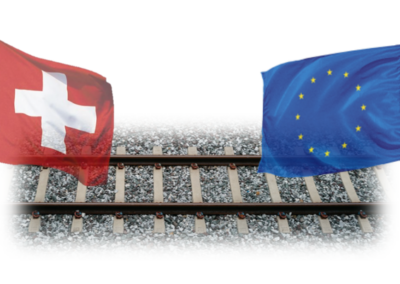
Stability as an indispensable basis for international transport cooperation
Once again, the status quo was saved in the Joint Committee on the Land Transport Agreement, despite the gloomy outlook. In 2024, the EU will once again grant Switzerland limited access to the ERA data platform OSS for one year. How long does Switzerland want to continue working with these dithering parties?
That’s the question:
- What is the aim of the Federal Office of Transport?
- Why is international cooperation important?
- Switzerland must move
- Stability is central to solving upcoming tasks
What is the Federal Office of Transport’s goal?
Trains should be able to travel across borders with as few obstacles as possible. The Swiss standard-gauge network forms a central part of the interoperable European rail network (Single European Railway Area). To make this possible, the FOT periodically harmonises the sovereign Swiss railway regulations with the current European rules of the Interoperability Directive and the Safety Directive. Switzerland should be able to act as an equal partner to the member states in the area of responsibility of the EU Transport Commission (DG MOVE). The overland transport agreement plays a central role in this bilateral cooperation. Ratified agreements create legal certainty and predictability.
Why is international cooperation important?
The EU wants to completely overhaul the existing national railway system and develop it into the strong mode of transport of the future. In future, modern trains are to run across borders on an efficient and standardised rail network without any obstacles. For this far-reaching transformation, rail operations must be redesigned from the ground up and new standardised systems with transparent interfaces must be developed and introduced. This can only be achieved with centralised coordination and guided cross-border cooperation. The 4th Railway Package, which came into force in 2019, forms the legal basis for this: as a European agency, ERA is now responsible for the technical design of standardised procedures and rules as well as for managing European authorisation procedures. For the necessary developments, the EU created new comprehensive organisations with «Europe’s Rail» as part of «Horizon» and provided them with considerable financial resources. Ministries, railway companies, associations and industry are called upon to actively participate in the ERJU’s numerous working groups, consisting of the System and Innovation Pillars, and to contribute their expertise to shaping the future European railway system. The topic of «DAK» is also an integral part of this organisation.
Switzerland must move forward
Over the past 25 years, Switzerland has adopted many elements from the newly organised EU railway world. Thanks to the proven equivalence, important steps towards integration into the European railway system have been achieved. The Federal Council’s decision to break off negotiations on an institutional agreement (InstA) has also meant that no substantial further development of the land transport agreement has been possible in the transport sector since 2021. Switzerland must now choose between isolation and cooperation.
Stability is key to solving upcoming tasks
The comprehensive transformation of the existing European railways, which are strongly national in character, into a modern, efficient overall transport system requires a joint, coordinated effort – going it alone could have serious consequences. Those who are part of it can participate and play an active role in shaping it.
Switzerland must now do its homework:
- Settle political differences with the EU
- Ensure permanent participation in the «Horizon 2020» research programme
- Update the EU-CH land transport agreement
- Implement the railway package market part (market liberalisation at least in international passenger transport)
- Complete rail package (adapt EBV, ERA membership, recognise ERA authorisations, regulate ERA competences)
- Reactivate bilateral agreements on cross-border routes
Transport and logistics are transnational. The planned migration to digitalisation and automation of the railways requires a willingness to make far-reaching changes on the one hand and major investments on the other. Both will only be possible in an efficient and sustainable manner if there is sufficient clarity about future cooperation.
SEE AND BE SEEN
17 April 2024 – VPI General Assembly, Vienna
The annual general assembly of the VPI, Association of Private Freight Wagon Interested Parties Austria, will take place on 17 April 2024 in Vienna.
18/19 April 2024 – Swiss Shippers’ Forum 2024, Interlaken
This year’s motto at the Swiss Shippers’ Forum is «The right innovations for your supply chain! Mastering the challenges, building trust, embracing the future.» As we are a partner association of the Swiss Shipper’s Council, VAP members can participate at preferential conditions. To programme and registration
7 may 2024 – VAP FORUM FREIGHT TRANSPORT, Zurich
The next Freight Transport Forum will take place on 7 may 2024 in Zurich – to the programme and registration.
29/30 MAY 2024 – UIP GA AND KEEPERS’ SUMMIT, VENICE
«Rising to the DAC challenge» The conference will take a look at how and where to interface rail with the other modes, the needs of multimodal supply chains and of course the way to finance it all. Register here.
27 August 2024 – VAP GENERAL ASSEMBLY, Bern
Our General Assembly will be held in Bern on 27 August 2024. Details and the invitation will follow. Save this date in your calendar.
- Link to the agenda of Swiss Supply: Next events
Media
VerkehrsMonitor, 23.4.2024
Güterbranche ärgert sich über «intransparente» SBB Cargo
NZZ, 4.4.2024
Güterzüge fahren chronisch Verluste ein
Rail Business, 18.03.2024
SBB Cargo France soll linksrheinische Verkehre sichern
verkehr.co.at, 17.03.2024
VAP-Stellungnahme zum SBB-Jahresergebnis 2023
Media release, 14.03.2024
SBB Jahresergebnis 2023
Media release, 31.01.2023
Verabschiedung Gleisanschluss-Charta 2024 in Deutschland
Media release, 10.01.2023
Richtige Weichenstellung für den Binnengüterverkehr auf der Schiene
SRF «Einstein», 14.12.2024
Unfall im Gotthard Basistunnel: Wie wird die Bahn sicherer?
SRF «10 vor 10», 19.10.2023
Konsequenzen nach Unfall im Gotthard-Basistunnel
Topics
You will find various publications from the VAP or from our partner organizations on the following topics:
Freight industry
- How do we shape the future of freight transport?
- What moves the freight industry?
- An overview of the players in rail freight transport.
Network
Here you will find useful information on railroads, their organization and network access.
Financing
Information on financial support and charges in freight transport.
Sites
Everything about free loading, terminals, sidings or even multimodal logistics hubs.
Interoperability
The VAP is committed to harmonizing the framework conditions so that trains can run effortlessly on European rail networks.
Sustainability
For a far-sighted future, various areas need to be designed sustainably.
Innovation
How can we drive innovation in freight transport?
Operations
In favor of fair competition, we want to utilize the strength of all modes of transport and combine them optimally. Because this makes the route shorter – and more economical – for everyone.
Events
Here you will find further information and documents on our events Forum Freight Transport, our General Assembly and others.
